

Europe Travel Guide
Last Updated: April 18, 2024

From beautiful Paris to smoke-filled coffeeshops in Amsterdam, Oktoberfest to La Tomatina, Europe is a massive, diverse continent with an unlimited assortment of things to see and do. You won’t have any problem filling your time, whether you’re backpacking Europe for a few months on a budget or just spending a few weeks there on a well-earned vacation.
The continent boasts wonderful beaches, historical architecture, amazing wine, and tons of world-class festivals. Every country is incredibly different from the next too, providing limitless variety in what you do during your trip.
I first backpacked Europe in 2006 and was hooked immediately. I’ve been visiting every year since, have run tours around the continent, and even wrote a book on traveling in Europe . It’s a destination I love and never get tired of exploring.
This guide will give you an overview of Europe and the tips and tricks you need to start planning your trip. I’ve also written extensive travel guides to each country on the continent (linked below in this post) so you can get more in-depth information for your specific itinerary too!
Table of Contents
- Things to See and Do
- Typical Costs
- Suggested Budget
- Money-Saving Tips
- Where to Stay
- How to Get Around
- How to Stay Safe
- Best Places to Book Your Trip
- Related Blogs on Europe
Click Here for Country Guides
Top 5 things to see and do in europe.

1. Tour the Greek Islands
These islands are the mecca of summer beach fun and each is unique in its own great way. There’s Ios (beach party central with archeological ruins and awesome boat tours); Kos (ancient ruins and nature); Crete (Bronze Age ruins of Knossos, hiking, beaches, and wine), Santorini (iconic blue water, white buildings, and local wineries); Mykonos , (the upscale party island with beautiful beaches, villages, and sunsets), Naxos (best island in the Cyclades). Plus, Milos, Corfu, Lemnos, Zakynthos, and so many more! With hundreds of islands in the country, you can always find what you are looking for!
2. Ride the rails
Europe is famous for its international rail system. Rail passes like the Eurail Pass have been around forever and still make it very easy to get from country to country on a relatively small budget (and with lots of flexibility). Europe has some of the fastest trains in the world that travel up to an incredible 217 mph (350 kph). The whole continent is connected by trains and there’s a growing push for even more connections and long-distance, high-speed trains in order to reduce flying and help combat climate change. There’s nothing more quintessential than riding the trains in Europe and I encourage you to take as many trains as possible. It’s one of the best ways to see the continent.
3. Get lost in Paris
The “City of Lights” is everything people say it is. I fell in love with it the first time I stepped foot in Paris . The city is just magical. You have a ton of museums, cafes, jazz clubs, famous art, and beautiful architecture. I love just strolling around the streets of the Quartier Latin (Latin Quarter) or Montmartre neighborhood as it makes for a breathtaking day. Another one of my favorite things to do here is just sit in the Jardin des Champs-Élysées park and picnic like the Parisians. For something a bit different, check out the famous Catacombs and Paris Sewer Museum. With so much to offer in the way of culture, history, and gastronomy, it would take years to see everything here but you can still get a good feel of the city in a few days.
4. Go city hopping
There are so many amazing cities in Europe that we’d need a top 100 to list them all. Here are some of my personal favorites and must-see cities: London is rich in history, culture, and the famous Big Ben clock; Edinburgh is a vibrant medieval city with cozy pubs and a famous castle with a huge New Year’s Eve Party; Amsterdam has cozy coffee shops and canopied tree-covered canals; Berlin has a wild party scene, street art, and the Berlin Wall; Barcelona has tapas, beach, and unique Gaudi architecture; coastal Lisbon has colorful tiles, old tramcars, cobblestone streets and plenty of fresh seafood; Prague has a beautiful intact Old Town, incredible architecture and eclectic bars; Tallinn Estonia has beautiful medieval buildings with colorful roofs. Florence is a mecca for Italian Renaissance architecture, art history, and gelato; Stockholm mixes medieval architecture and modern art and design. Crisscross the continent, take in the culture, and enjoy all the historic cities!
5. Hit the Alps
Whether you go skiing in the winter or hiking in the summer, the Alps hold some of the most breathtaking views in all the world. You don’t even need to be an expert hiker because there are mountain trails for all levels and crystal-clear Alpine lakes. Check out the spectacular Eibsee trail loop in Bavaria at the foot of Die Zugspitze, Germany’s tallest mountain, for the clearest, multi-colored, sparkling lake you’ve ever seen. Or the Männlichen Kleine Scheidegg Panorama trail in Switzerland’s stunning green and snow-capped Alps. Or visit Italy’s Dolomites in South Tyrol for the scenic Seceda trail. The Alps have trails for every fitness level and in every season.
Other Things to See and Do in Europe
1. tour amsterdam.
I love Amsterdam so much that I lived here for a short period of time in 2006. Here cobblestone and brick streets weave around lovely canals as people ride their bikes to and fro. My favorite things to enjoy here are Amsterdam’s vibrant art and music scene and there are also a ton of interesting museums here like the Anne Frank House, FOAM, the history museum, and the hemp museum. Be sure you get out of the center into Jordaan and Oost with their wonderful outdoor cafes and fewer tourists. Also, a visit to Amsterdam wouldn’t be complete without a canal cruise to visit the many islands and there are many to choose from that include snacks and drinks, sunset cruises, live guided tours, and more.
2. Hang out in Barcelona
Barcelona is a city that goes 24 hours a day, 7 days a week. It truly could give NYC a run for the “city that never sleeps” title. Be prepared for late-night dinners and parties until dawn. Besides a great food and nightlife scene, there is a wonderful beach, tons of Gaudi architecture (including the fairytale-like Parc Güell, as well as the iconic Sagrada Familia , which has been under construction for over 100 years!), incredible food tours, one of the best history museums in the country, and lots of outdoor spaces. What I love about Barcelona is that when you’re ready to chill, you can wander around Parc de la Ciutadella and marvel at the majestic fountains, plant life, and buildings created from an ornate military fortress.
3. Visit Berlin
Hip and trendy Berlin is an energetic destination. It is one of Europe’s most affordable capital cities, with a vibrant music and art scene and a growing foodie movement. Be sure to spend some time learning about the city’s darker history via the many excellent museums, memorials, and landmarks. The East Side Gallery, a section of the Berlin Wall that’s now painted with murals, and the Memorial to the Murdered Jews of Europe are two especially powerful reminders of Germany’s past. For all periods of German history, don’t miss the Deutsches Historisches Museum (German Historical Museum) – it’s one of the best history museums in the world. Once you’ve had your fill of history, relax in Berlin’s many green spaces, from Tempelhof Field, the site of a former airfield and popular local hangout spot, to Tiergarten, a tree-covered former hunting ground for 17th-century aristocrats.
4. Drink beer at Oktoberfest
Oktoberfest is a must for anyone going to Germany at the end of September. While not a budget option since beers now cost 15 € a maß, I love the energy and friendly camaraderie this event inspires. For two weeks, millions of people from all over the world gather for lots of beer, excitement, music, and wild fun. Watching thousands of people sing together, raising quart-sized beer mugs for endless toasts, and enjoying the general party atmosphere makes you feel good about the world. (Or maybe that’s just the beer?) Just be sure to book your accommodation well in advance and be prepared to pay top prices for them. If you don’t have an outfit, don’t worry, there are plenty of shops even at the main train station where you can buy a Bavarian dirndl dress and men’s lederhosen.
5. Experience London
Get a taste of English culture in diverse London . The museums here are some of the best in the world (most are free) and include the Tate, the British Museum, the City Museum, the National Gallery, the Historical Museum. There’s no shortage of iconic sights here as well, with Big Ben, the House of Parliament, the London Eye, the Tower of London, Tower Bridge, and of course, Buckingham Palace. I love London’s diversity because of the countless international eateries with great food and wonderful pub culture, perfect for after a long day seeing the sights. Head to Brick Lane on the weekends for some amazing food and craft markets. I prefer Paris to London, but there is something sophisticated and fun about London. Just watch those pints — London is not a cheap destination!
6. Get outdoors in Scandinavia
My favorite region in Europe is Scandinavia. The quality of life here is high, the people are beautiful and friendly, and the cities are clean and historic. Cycling the cities, taking canal tours, hiking the vast forested areas, archipelago hopping, enjoying fika (a Swedish coffee break), and warming up in saunas are just a few of the popular activities that await you here. True, this area of Europe is not cheap, but there are plenty of ways to reduce your expenses. Don’t let the high prices scare you away. Highlights for me include Copenhagen , Stockholm , Gotland, Norway’s fjords, and Lapland in Finland .
7. Get enchanted in Prague
Prague has an amazing history and is one of the most beautiful and picturesque cities I’ve ever seen. Highlights include the 9th-century Prague Castle, the magnificent Charles Bridge (built in the 14th century and one of the oldest standing bridges in the world), the 10th-century old square with its iconic astronomical clock, and the winding Jewish Quarter. Even if you only have a few days there don’t miss the free walking tour which is one of my favorites in Europe and the best way to learn about the Old Town and the tragic history of the city that went from thriving Bohemian capital of art, music, and literature to part of the Iron Curtain after WWII. Some of my favorite gems here include the fantastic black light theater shows in 4D and the one-of-a-kind medieval dinner show in an old tavern complete with musicians and jugglers not to mention hearty food and drinks. During the weekends it heaves with people enjoying the bars, cheap beer, and delicious food so try to visit during the week (and in the spring or fall) to beat the crowds.
8. Relax on the French Riviera
Here, you can pretend to live the high life for a little bit. Have fun in the sun, relax on the beach, swim in azure blue water, hobnob with the rich and famous, and sail on (or gaze at) gigantic yachts. As for cities, Nice is nice with its palm-tree-lined promenade, old town, and many art museums. If you want to go see how the rich and famous live, spend an afternoon checking out Cannes to soak up some glamorous vibes on La Croisette where they hold the famous Cannes Film Festival. The kingdom of Monaco with its tiny streets, beautiful buildings, and world-famous casino is just a skip away too.
9. Enjoy the great outdoors in Interlaken
Located in the beautiful mountains of Switzerland, Interlaken is a gorgeous place to unwind with fantastic hiking, delicious hot chocolate, and plenty of outdoor sports. The area is full of natural attractions to explore, including the St. Beatus Caves (complete with a legendary dragon), the cascading 500-meter-high (1,640 feet) Giessbach Waterfalls, the Jungfraujoch mountain railway (which leads to the highest train station on the continent), and a plethora of lakes (hence the town’s name). It’s a good alternative to all the cities and museums. Interlaken is also a popular party destination for backpackers and other young travelers. By far, my favorite scenic and visually stunning trail was the Oberberghorn panoramic hike, where you can wander the green mountain ridge ogling the amazing views and the turquoise-blue Brienzersee.
10. Experience history in Rome
In this thriving historical city, you can’t walk two feet without stumbling over a ruin, making Rome a history buff’s dream. Its tiny streets are perfect for wandering as you explore the Colosseum, see the Forum and Palatine Hill, visit the Pantheon, spend time in Vatican City, admire the Spanish Steps, and toss coins into the famous Trevi Fountain. The skip-the-line tickets can definitely be worth it so you don’t waste time waiting outside attractions. Rome also has amazing food (it’s Italy, after all) and nightlife. Visit the Trastevere area for a taste of “local” Rome and chill bars. It’s my favorite area in the city because you feel like you’re in a small village in the middle of a big city.
11. Hike around the Cinque Terre
Cinque Terre is my favorite part of Italy. These five beautiful cliffside towns are perched near warm waters and beautiful olive and grape groves. There are wondrous and strenuous hikes in these hills; for a real challenge, take trail #8. Or just walk the coastline for something less difficult. Many activities here revolve around the coastline: kayaking, swimming, having a beach picnic or visiting the Technical Naval Museum. If you happen to be here in December or January, don’t miss the Nativity Manarola, the world’s biggest lighted nativity scene.
12. Tour Krakow
Krakow looks like it stepped out of a medieval postcard. It’s a hip, trendy, and youthful city that’s the center of education in Poland, meaning there are a lot of university students here. Most travelers come to party here (the vodka is cheap) but try to enjoy the city’s history and food besides just the bars. Walk the Royal Road through the Old Town to the 13th-century Wawel Castle, tour Schindler’s Factory (where Schindler saved over 1,200 Jews during World War II), and visit the sobering Auschwitz-Birkenau concentration camp. You can also take a fascinating day trip to the UNESCO World Heritage Wieliczka Salt Mine, a 13th-century mine with cavernous chambers, statues, chapels, chandeliers, and cathedrals all carved out of salt.
13. Visit the ruin bars in Budapest
The coolest nightlife in all of Europe is found in Budapest . Built in abandoned buildings, ruin bars feature funky art installations, repurposed furniture, and quirky decor. They are amazing, fun, and great places to meet locals, as people of all ages flock here. Open since 2001, Szimpla Kert is the original ruin bar and one of my favorites, along with Instant-Fogas Complex, which takes up an entire building and is actually many different bars in one. Don’t skip the ruin bars — they’re one of the most unique things about the city!
14. Explore Cornwall
The best part of England is outside London, yet unfortunately, not a lot of travelers leave London. Head west to the area of Cornwall for cheaper prices, welcoming locals, natural beauty, great hiking, rolling hills, plenty of medieval castles, and picturesque small towns. If you like biking, the Camel Trail from Bodmin to Padstow is worth the trip and you even pass by a local vineyard. It’s an easy way to spend a day (and it’s pretty flat so it’s not too hard to do.) Plus, I had the best fish and chips in Cornwall! Overall, it’s what you think of as “traditional England.”
15. Walk the Camino
El Camino de Santiago (The Way of Saint James) is an ancient pilgrimage route that stretches from France all the way across northern Spain. It is a 500 mile (800 km) trail that winds through incredible terrain, ending in Santiago de Compostela at the cathedral where St. James is supposedly buried. As a pilgrim, you get a “pilgrim’s passport” which allows you to stay in affordable pilgrim-only hostels, making this a surprisingly budget-friendly adventure. While it usually takes over a month to complete, you can just walk a section if you don’t have the time. To receive a “Compostela” (certificate of completion), you just need to walk the last 62 miles (100 km), which generally takes 4-5 days.
16. Throw tomatoes during La Tomatina
By far my favorite festival, the largest food fight in the world happens during the last Wednesday of August in Bunol, Spain. What started in 1945 as a local brawl has turned into a massive event drawing tens of thousands of people from all over the world. For about an hour, everyone throws tomatoes at each other, leaving streets ankle-deep in tomato juice. Afterward, everyone walks down to the river, cleans off, and then heads to the town square for sangria and music.
17. Find Dracula in Romania
Not a lot of people visit Romania but this underrated country in Eastern Europe has undiscovered yet picturesque medieval towns like Brasov (home to “Dracula’s castle”), Sighisoara, and Sibiu; gorgeous beaches on the Black Sea; and incredible hiking in the Fagaras Mountains — all at dirt-cheap prices. Other major sights include frescoed Byzantine monasteries, the steepled wooden churches of Transylvania, the hip university town Cluj-Napoca, the post-communist capital of Bucharest, and the Danube Delta, a huge nature reserve.
18. Drink whisky in Islay
Whisky has a long history on Islay , an island off Scotland’s west coast. It’s been made there since the 16th-century — first in backyards and then, starting in the 19th-century, in large distilleries. Over the years, whisky from the island came to be considered a specialty and was used to flavor a lot of other blends on the mainland. There are currently nine working distilleries on the island, all located along the island’s shores, with Laphroaig, Ardbeg, and Lagavulin being the most famous. Most distilleries here make single-malt Scotch, meaning that only one type of grain (barley) is used. My visit here was amazing and, even if you don’t like whisky, there are tons of good hikes and walks throughout this magnificent island.
19. Explore Iceland
Iceland is a magical country with majestic waterfalls, hidden hot springs around every corner, and sweeping vistas unlike anywhere else in the world. After my first visit, the country quickly became one of my favorite countries. With whale watching in the summer, the northern lights in the winter, and geothermal baths for soaking in year-round, there really is no bad time to visit! While Iceland’s main draw is the epic natural landscapes, it’s worth spending a couple of days in Reykjavik with its café culture, artsy feel, and brightly colored wooden row houses.
20. Sail the Croatian coast
With calm winds, short distances, a coastline littered with over 1,000 islands, and countless historical sites, Croatia is one of the world’s best sailing destinations. If you can, go during the shoulder season when you can find some great deals. Plan to stay at least a couple of days on one of the islands, with the most popular being Brac, Hvar, Krk, Cres, and Lošinj. However, don’t be afraid to get off the beaten path and explore some of the lesser-known islands such as Silba, Vis, and Lastovo. If you want to splash out and spend a week partying on a yacht, check out The Yacht Week, which hosts week-long parties, complete with DJs, from May-September. You can book a full boat to share with friends or just a cabin if you’re traveling solo. Prices start at 5,250 HRK per person and go up to 9,300 HRK.
21. Explore the Balkans
While the Balkans have become more popular with backpackers in recent years, it’s still largely overlooked by most budget travelers, despite being an extremely budget-friendly region. The Balkan peninsula is home to great (and again, overlooked) wine, beautiful medieval towns like Kotor and Mostar, stunning mountainous landscapes, beautiful pebble beaches, coffee culture, fresh, hearty yet inexpensive food, and museums covering the area’s history, including the most recent turbulent events of the early 1990s. I especially loved my time in Albania . Don’t miss the beautiful beaches in Ksamil, nicknamed the “Maldives of Europe’ as well as the mountain village of Gjirokastër, which was occupied by Romans, Byzantines, and Ottomans. The Balkans have so much to offer for every budget and every country has its unique cultural flavor.
22. Take a wine tour in the Loire Valley
Located in central France, the picturesque Loire Valley is a UNESCO World Heritage site and stretches 280 kilometers (174 miles) along the Loire River. One of the major wine-producing regions of France, the area is home to some of the best wines in the world, with over 1,000 vineyards open to the public. Even those who don’t drink wine will enjoy the beautiful small towns, great food, and the region’s over 300 impressive chateaux. I loved the medieval Chenonceau Castle and Chateau Villandry and the small villages like Saint-Florent-le-Vieil. Spring and Autumn are my favorite times to visit because you can go biking and do outdoor activities when it’s not too hot and there are fewer people. It’s an area not to be missed.
23. See Fado in Portugal
Fado is an important musical tradition in Portugal , originating in Lisbon and stretching back some 200 years. The word “fado” likely stems from the Latin word for fate, and it’s very haunting, poetic, and emotional music. Most of the songs follow themes of loss and mourning, and the music was popular with the working class (especially sailors). Performances normally take place in restaurants during dinner. In Lisbon, head to Clube de Fado, Tasca do Chico, Parreirinha de Alfama, or Senhor Vinho.
24. Tour green Slovenia
Slovenia is one of Europe’s least-visited destinations, which is mind-blowing to me because it’s an amazing place to visit. Slovenia offers all the beauty of Western Europe but at a fraction of the cost and with a fraction of the crowds. Perfect for outdoor adventure lovers, Slovenia offers rugged mountains, untouched landscapes, fantastic ski resorts, plentiful wine, sprawling cave systems, incredible food, and postcard-perfect lakes, such as the famous Lake Bled with its castle on an island. I loved Piran, Slovenia’s often overlooked coastal Venetian-style harbor town that was actually founded 3000 years ago. Stroll around its beautiful windy cobble-stoned streets, beautiful plazas, and take advantage of the many affordable restaurants right on the water. Make sure to also spend a few days in the country’s capital, Ljubljana, known as one of the continent’s greenest and most livable cities. Take a river cruise to see the city and enjoy the friendliness of the locals.
For more information on specific countries in Europe, check out the guides below:
- Albania Travel Guide
- Austria Travel Guide
- Belgium Travel Guide
- Belarus Travel Guide
- Bosnia & Herzegovina Travel Guide
- Bulgaria Travel Guide
- Czechia Travel Guide
- Croatia Travel Guide
- Denmark Travel Guide
- England Travel Guide
- Estonia Travel Guide
- Finland Travel Guide
- France Travel Guide
- Germany Travel Guide
- Greece Travel Guide
- Hungary Travel Guide
- Iceland Travel Guide
- Ireland Travel Guide
- Italy Travel Guide
- Latvia Travel Guide
- Lithuania Travel Guide
- Malta Travel Guide
- Moldova Travel Guide
- Montenegro Travel Guide
- Netherlands Travel Guide
- Norway Travel Guide
- Portugal Travel Guide
- Poland Travel Guide
- Romania Travel Guide
- Scotland Travel Guide
- Slovakia Travel Guide
- Slovenia Travel Guide
- Spain Travel Guide
- Sweden Travel Guide
- Switzerland Travel Guide
- Ukraine Travel Guide
Europe Travel Costs

Accommodation – Accommodation prices vary greatly by region. In Western Europe, hostel dorm rooms cost between 25-45 EUR per night, depending on the room’s size and the popularity of the hostel. I stayed in a 6-bed dorm in Berlin for 20 EUR, while the same one would have cost me around 45 EUR in Paris. A room in Paris costs on the higher end and a room in cheaper Athens costs on the lower end.
In Eastern Europe, hostel dorm rooms cost between 10-15 EUR per night depending on the size of the dorm room and the popularity of the hostel. The further east you go, the cheaper it gets. Expect to pay around 30-60 EUR per night for a private room that sleeps two.
In Scandinavia, hostel dorm beds cost around 25-45 EUR, while private rooms are 65-80 EUR. Budget hotels start around 85 EUR.
Most accommodations offer free linens, free Wi-Fi, and a lot offer free breakfast, but it’s important to check specific websites for exact amenities.
Campsites cost between 10-15 EUR per night for a basic plot for two without electricity.
Food – Food traditions in Europe run deep, stretching back centuries to become integral parts of each country’s culture. From baguettes in France to tapas in Spain, from hearty Eastern European stews and goulash to the fresh vegetables and olive oils of the Mediterranean, European cuisine varies as much as the countries themselves. Food prices differ greatly across the continent, so check individual country guides for specifics.
But no matter where you are, even in the more expensive countries, finding places to eat within your budget is easier than you might think. Throughout Western Europe, you can find small shops, street food stalls, or food trucks where you can get sandwiches, gyros, kebabs, slices of pizza, or sausages for between 3-7 EUR. These shops are most often found in train stations, bus stations, and main pedestrian areas, and offer cheap food alternatives that can have you eating on 12-17 EUR per day. Fast food (think McDonald’s) costs around 7-10 EUR for a combo meal.
Turkish, Middle Eastern, and Vietnamese eateries abound in Germany, while Indian food is incredible and everywhere in the United Kingdom. Meals at these restaurants usually cost between 8-12 EUR.
Restaurant meals in casual, traditional eateries generally cost around 13-25 EUR for a main dish and drink. Food is much cheaper in the east than in the west, and in the west, northern regions like Scandinavia and the UK are more expensive than southern countries like Spain, Portugal, and Italy.
In Eastern Europe, even if you are eating out for all your meals, you can still get by on a food budget of as little as 15 EUR per day.
For drinks, a pint of beer is 2-5 EUR, a glass of wine is 2-7 EUR, a cappuccino is 2-5 EUR, and cocktails range from 6-14 EUR.
If you eat out, do so at lunch and get the prix-fixe menu (two-course or three-course set menu). Restaurants offer this set menu during lunch, and with prices between 10-20 EUR, it’s a way better deal than the regular dinner menu. You can also get affordable lunches at outdoor markets. So many European cities have huge fresh food markets throughout town.
You can cook your own food for around 45-65 EUR per week. This gets you basic staples like rice, pasta, seasonal produce, bread, and some meat. You can save money by shopping at discount supermarkets like Profi, Lidl, Aldi, and Penny Market.
If you want to save big money on meals, head to one of the markets, pick up some cheese, wine, bread, meats, or anything else, and go to the park for a picnic. (Or grab a sandwich for later!) You’ll find the locals doing the same thing, and it’s one of the cheaper ways to get a true taste of local food.
Backpacking Europe Suggested Budgets
Prices for travel in Europe vary greatly depending on how far north, east, south, or west you travel. If you stick to the budget accommodations, food, and tours listed here and use all my tips on saving money, you need about 65-110 EUR per day in Western Europe, 40-50 EUR in Eastern Europe, and about 85-130 EUR in Scandinavia.
Those numbers reflect a traveler who stays in hostels, cooks some meals and eats out cheaply, enjoys a few drinks, and sticks to free and cheap activities like hiking, walking tours, and enjoying nature. This is your typical backpacker budget. You aren’t going to have a fancy time, but you aren’t going to want for anything either.
However, by getting tourist cards and rail passes, avoiding flights, occasionally Couchsurfing or camping, cooking all your meals, and not drinking, you can travel a lot cheaper. On this budget, you could do Western Europe on 35-45 EUR per day, Eastern Europe on 20-25 EUR, and Scandinavia on 50-65 EUR. That would require you to take a train or a bus or hitchhike everywhere, skip most museums, and limit how often you go out.
Generally, the suggested daily budget for Europe is 80-120 EUR. You can use the chart below to get an idea of how much you need to budget daily. Keep in mind these are daily averages – some days you’ll spend more, some days you’ll spend less (you might spend less every day). We just want to give you a general idea of how to make your budget. Prices are in EUR.
Europe Travel Guide: Money-Saving Tips
Individual country guides have more specific information on how to save money in them but here are some general tips on cutting your costs while you explore Europe:
- Picnic – This continent has a lot of little shops where you can buy pre-made sandwiches or ingredients to make your own. Many supermarkets have delis as well where you can get food to go. Buy some food, eat outside, and watch the city and its people go by. It’s a much more enjoyable and cheaper way to eat.
- Eat local and cheap – Not into picnicking? Eat at local sandwich shops, pizza parlors, Maoz, Wok to Walks, and outdoor street vendors. Avoiding restaurants and eating at a lot of the local “grab n’ go” places gives you a taste of the local cuisine at a much cheaper price. If you’re really on a budget, use your creative cooking skills to prepare meals at the hostel as well.
- Stay with a local – Hostels can add up really quickly. If you don’t have any friends with whom you can stay, consider using Couchsurfing , which connects you with locals who let you stay with them for free. Plus, they tend to also have meetups to meet other locals and travelers. It’s a great way to save on accommodation and meet a local who can share their insider tips and advice.
- Camp in a garden – A very good camping service specific to Europe is Campspace , which allows you to pitch a tent in someone’s backyard for free or for a small fee (around 10-20 EUR). All of the garden owners have profiles that tell you what services and facilities they offer. Also, many countries allow wild camping (like Sweden), which can save you a fortune if you have a tent.
- Take the bus – Budget bus companies like Flixbus can take you across the continent for cheap. I personally feel it’s best for day travel as sitting up for an overnight bus isn’t really ideal for sleeping. It isn’t glamorous, but with tickets starting at 5 EUR, you really can’t complain!
- Get a Rail Pass – Eurail Passes have saved me hundreds of dollars. If you are traveling far distances and through many countries, they are a great deal.
- Take the free city tours – One of the great things about Europe is that you can find free walking tours in all the major cities. They can be a great way to see the city attractions, take in some history, and learn your bearings without spending any money. Just make sure to tip your guide at the end!
- Plan accordingly – Plan your trip around Europe so you avoid doubling back. Transportation is a big expense so proper planning can save you a lot of money (and time). Go in a straight line or a loop. Booking your accommodation ahead helps you save as well since cheap, good places unsurprisingly get reserved first. One thing I’ve learned is that waiting until the last minute means you get stuck with expensive places or cheap places no one wants.
- Fly cheap – If you know where you are going and a train won’t do, try to book flights early. You can often get round trip fares for as little as 5 EUR from many of the European discount airlines like Ryanair or Wizz. Many capital cities have smaller airports farther from the city with ‘inconvenient’ times but cheaper fares. Keep in mind you might need to factor in an early morning Uber or taxi if the busses aren’t running and you have an early flight!
- Drink less – Those 5 EUR beers add up. Hit happy hours or pick and choose when you party. Hostel bars are a good place to get cheap drinks or buy your alcohol at the supermarket. Plus, in Europe, it’s legal to drink outside in parks, plazas, by the lakes or rivers. You’ll find you can save a lot of money by not going to bars and clubs. Partying your way across the continent will destroy your bank balance in no time.
- Get a city tourist card – Many local tourism offices sell a tourism card for all their attractions, tours, and restaurants. This card gives you free entry and substantial discounts on all the attractions and tours in a city, free local public transportation (a huge plus), and discounts at a few restaurants and shopping malls. They save a ton of money. If you plan on doing a lot of sightseeing, get one of these cards.
- Rideshare – If you’re flexible in your schedule, use the ridesharing service BlaBlaCar to catch rides with locals between cities (or countries) by paying a small fee. It’s like Airbnb but for rides. I used this service in Switzerland and, not only did I save a lot of money, but I got to meet interesting people and learn about local culture and life. Drivers are verified and it’s perfectly safe, though sometimes rides cancel at the last minute (which is why you need to be flexible). Check their ratings first and try to use rides where the person has done many trips.
- Bring a water bottle – The tap water is safe to drink in most of Europe, so bring a reusable water bottle to save money and reduce your plastic use. LifeStraw is my go-to brand as their bottles have built-in filters to ensure your water is always clean and safe.
- Get a HostelPass – HostelPass is a discount membership for hostels in Europe. Members get 10-20% off select hostels around Europe, as well as perks like free breakfast or free drinks. There are discounts on tours and activities too. It’s a great way to save money if you’re bouncing around Europe as they have hostels in 18 countries around the continent.
Where to Stay in Europe
Europe has a ton of budget accommodation options. The individual country and city guides have tons of recommendations but here’s a short list of some of my favorite budget hostels and hotels around Europe:
- The Flying Pig (Amsterdam, The Netherlands)
- Hotel 54 (Barcelona, Spain)
- Generator Hostel (Copenhagen, Denmark)
- Harcourt Hotel (Dublin, Ireland)
- Castle Rock (Edinburgh, Scotland)
- Ios Palm Pansion (Ios, Greece)
- Greg and Tom’s Party Hostel (Krakow, Poland)
- Largo da Sé Guest House (Lisbon, Portugal)
- Sophie’s Hostel (Prague, Czech Republic)
- The Yellow (Rome, Italy)
- City Backpackers (Stockholm, Sweden)
How to Get Around Europe

Public transportation – Transportation around most European cities is by tram, subway, or bus. Prices are typically around 2 EUR for a one-way ticket in Western Europe and closer to 1 EUR in Eastern Europe. Most large cities also have day passes available that offer unlimited public transportation. These passes are usually 5-12 EUR per day.
In large cities with international airports, there is usually a bus or train available that ferries travelers from the downtown core to the airport. Expect to pay around 5-15 EUR to get to/from the airport.
Bus – Buses are not quite as comfortable as Europe’s trains, although certain lines do have great amenities (like roomy seats and Wi-Fi). While buses are not the most efficient way to travel around the continent, they’re certainly dependable, reliable, and cheap. You can find last-minute rides for as little as 5 EUR. A route from Berlin to Munich is about 25 EUR, while Paris to Bordeaux can be as low as 10 EUR. Longer routes, like Amsterdam to Copenhagen, start at around 47 EUR.
Each country has its own national bus service, but some lines also take you long distances internationally. Megabus and Flixbus (which now owns Eurolines) are the most popular companies.
Train – Train travel is a great way to see Europe. Intercity train prices vary wildly from country to country, depending on whether you take the slow train or a high-speed train and how far in advance you book. For example, a high-speed train from Berlin to Munich costs around 38-60 EUR, Bordeaux to Paris is about 50-85 EUR, and Madrid to Barcelona ranges from 45-85 EUR. Non-high-speed trains and other intercity lines are a lot cheaper, generally costing about 40-50% of the price of high-speed trains. Eastern Europe inter-country trains usually cost between 45-100 EUR when the ticket is booked last minute. Short train rides of 2-3 hours within countries cost about 27 EUR.
To find routes and prices for trains around Europe, use Trainline .
You may also want to consider getting a Eurail Pass , which allows travelers to explore Europe by providing a set number of stops in a specific time period. These passes are continent-wide, country-specific, or regional. It can potentially save you hundreds of dollars.
Ridesharing/Car sharing – If your schedule is flexible, use a ridesharing service and catch rides with locals between cities (or countries). Drivers are verified and it’s perfectly safe. BlaBlaCar is the most popular.
If you’d rather rent a car yourself and find passengers to share a ride with, use Discover Cars to find the best car rental prices.
Flying – Budget airlines are so prolific that competition helps keep fares low. You can often find tickets where the fare is just 5 EUR round-trip! Companies like EasyJet, Ryanair, Wizz, and Vueling offer mind-blowingly cheap flights throughout Europe. Book at least a month early to scoop up great deals.
Make sure that the airport they fly into isn’t too far out of your way (transportation from the secondary airport sometimes negates the savings from using the budget airline itself).
Keep in mind that you’ll have to pay to check your baggage on these cheap flights. It costs about 25-39 EUR for one checked bag. If you wait to pay for your luggage at the gate, you end up paying almost double. Travel carry-on only to avoid this added cost.
Hitchhiking – Hitchhiking in Europe is very safe, but it’s not for everyone. Hitching is quite common around the continent and I’ve met a number of travelers who have done it (I, myself, traveled this way in Bulgaria and Iceland). Some countries are very supportive (Romania, Iceland, Germany) while others may be a bit more time-consuming (Italy, Spain). HitchWiki is the best website for hitchhiking info.
Here are my suggested articles for how to get around Europe:
- 7 Cheap Ways to Travel Across Europe
- Are Eurail Passes a Giant Scam or Do They Save You Money?
- The Ultimate Guide to Finding Cheap Flights
When to Go to Europe
There’s no wrong time to visit Europe. Peak season is summer, when Europe gets crowded and August is the time most European families are at the beach so everything becomes more crowded and expensive. But the overall atmosphere and weather are great during this time, so it’s still worth visiting during peak season (just book your accommodation in advance — especially in August). Keep in mind it’s much hotter in summer so if you like AC, be sure to check that your hostel or hotel has it before you book. You can expect the most crowds in Western Europe. For this reason, I feel summer is a great time to visit the Balkans and the Baltics because many people head to the beaches in Spain, France, Italy, Croatia, and Greece.
Shoulder season is spring and fall (April-May and September-October). It’s still warm during this time but there aren’t as many crowds and prices are cheaper. This is my favorite time to visit hotspot places like Spain, Croatia and Greece, where it’s still hot enough to swim in the sea but you have way more room on the beach. It’s also a good time to go hiking in the Alps in Germany, northern Italy, Slovenia and Switzerland because it’s cooler during the day so you’re much less sweaty on the mountain without shade. The weather is good, the crowds are smaller, and the prices lower.
Winter is from November to February but in much of Central Europe, it’s wet and cold until March or April. It gets cold, even as far south as it gets (like Greece). On the other hand, the Christmas season has Christmas markets and festivals galore! Even if it’s cold, this is a cultural tradition you can’t miss and why I love Europe in December. There is hot mulled wine, sweets, and plenty of hot snacks, which vary by country. One of my favorites is Prague because the Old Town Square is lit up with a gigantic tree with aromas of crispy cinnamon pastries and mulled wine. Berlin takes their Christmas markets very seriously, so there are around 80 different markets with special themes.
Winter is fantastic in Europe for skiing and snowboarding but it doesn’t have to break the bank if you plan carefully. While Switzerland and France are probably the most famous, they are also expensive, but there are plenty of budget winter options.
How to Stay Safe in Europe
Europe is very safe for backpacking and solo traveling, even if you’re traveling solo, and even as a solo female traveler. Violent crimes against tourists are very rare. In fact, some of the safest countries in the world are in Europe. (I wrote a whole article about how Europe is safe to visit right now .)
That said, there are scams and petty crimes you should watch out for, especially around popular tourist landmarks. The most important thing to be aware of is pickpockets in crowds and on public transportation. Zip your bags and don’t put your mobile phone in a jacket pocket where someone could quickly take it. This should be obvious but don’t flash your money to let everyone know you have a huge wad of cash.
When choosing a hostel, look for ones with lockers. It’s always a good idea to carry around a padlock or combination lock. Most hostels are safe and travelers respect each other and I’ve rarely seen things happen to people’s valuables. Nevertheless, I always think that prevention is better.
As anywhere, the standard precautions apply (never leave your drink unattended at the bar, never walk home alone intoxicated, etc.). When at the bar, always keep an eye on your drink. Avoid walking home alone at night if you’re intoxicated.
For female travelers in particular, it’s always a good idea to have a bit of extra money on you just in case you need to take an Uber or taxi back by yourself so you don’t take unnecessary risks to save money. If you’re using apps to date people while traveling, please use common sense and meet in public places. Since I’m not a female traveler, please check out the numerous female bloggers who have first hand knowledge of this.
If you’re worried about scams, you can read about common travel scams to avoid here.
If you rent a vehicle, don’t leave any valuables in it overnight. Break-ins are rare, but it’s always better to be safe than sorry. Be aware that the UK drives on the left and that most rental cars in Europe will have manual transmissions unless you request otherwise.
When hiking, always bring water, sunscreen, and bandaids or foot plasters. There is nothing worse than being halfway up the mountain with a blister and nothing you can do about it!
Likewise, when at the coast, don’t forget not only to wear sunscreen! I can’t tell you how many times I’ve seen people get burnt to a crisp the first day. Be sure to check the weather before you depart and dress accordingly.
If you do experience an emergency, dial 112 for assistance.
Always trust your gut instinct. Make copies of your personal documents, including your passport and ID. Forward your itinerary to loved ones so they know where you are.
The most important piece of advice I can offer is to purchase good travel insurance. Travel insurance will protect you against illness, injury, theft, and cancellations. It’s comprehensive protection in case anything goes wrong. I never go on a trip without it as I’ve had to use it many times in the past. You can use the widget below to find the policy right for you:
Europe Travel Guide: The Best Booking Resources
These are my favorite companies to use when I travel. They consistently have the best deals, offer world-class customer service and great value, and overall, are better than their competitors. They are the companies I use the most and are always the starting point in my search for travel deals.
- Skyscanner – Skyscanner is my favorite flight search engine. They search small websites and budget airlines that larger search sites tend to miss. They are hands down the number one place to start.
- Hostelworld – This is the best hostel accommodation site out there with the largest inventory, best search interface, and widest availability.
- Booking.com – The best all around booking site that constantly provides the cheapest and lowest rates. They have the widest selection of budget accommodation. In all my tests, they’ve always had the cheapest rates out of all the booking websites.
- HostelPass – This new card gives you up to 20% off hostels throughout Europe. It’s a great way to save money. They’re constantly adding new hostels too. I’ve always wanted something like this and glad it finallt exists.
- Get Your Guide – Get Your Guide is a huge online marketplace for tours and excursions. They have tons of tour options available in cities all around the world, including everything from cooking classes, walking tours, street art lessons, and more!
- The Man in Seat 61 – This website is the ultimate guide to train travel anywhere in the world. They have the most comprehensive information on routes, times, prices, and train conditions. If you are planning a long train journey or some epic train trip, consult this site.
- Rome2Rio – This website allows you to see how to get from point A to point B the best and cheapest way possible. It will give you all the bus, train, plane, or boat routes that can get you there as well as how much they cost.
- FlixBus – Flixbus has routes between 20 European countries with prices starting as low 5 EUR! Their buses include WiFi, electrical outlets, a free checked bag.
- SafetyWing – Safety Wing offers convenient and affordable plans tailored to digital nomads and long-term travelers. They have cheap monthly plans, great customer service, and an easy-to-use claims process that makes it perfect for those on the road.
- LifeStraw – My go-to company for reusable water bottles with built-in filters so you can ensure your drinking water is always clean and safe.
- Unbound Merino – They make lightweight, durable, easy-to-clean travel clothing.
- Top Travel Credit Cards – Points are the best way to cut down travel expenses. Here’s my favorite point earning credit cards so you can get free travel!
GO DEEPER: Nomadic Matt’s In-Depth Budget Guide to Europe!

While I have a lot of free tips on Europe, I also wrote an entire book that goes into great detail on everything you need to plan a trip here on a budget! You’ll get suggested itineraries, budgets, even more ways to save money, my favorite restaurants, prices, practical information (i.e. phone numbers, websites, prices, safety advice, etc etc), and cultural tips.
I’ll give the insider view of Europe that I got from years of traveling and living here! The downloadable guide can be used on your Kindle, iPad, phone, or computer so you can have it with you when you go. Click here to learn more about my book on Europe!

Europe Travel Guide: Related Articles
Want more tips for your trip? Check out all the articles I’ve written on Europe travel and continue planning your trip:

The 7 Best Hotels in London

10 Scotland Road Trip Tips You Need to Know Before You Go

The Perfect 7-Day Croatia Itinerary

The 6 Best Hotels in Copenhagen

The 6 Best Hotels in Florence

The 7 Best Hotels in Madrid
Get your free travel starter kit.
Enter your email and get planning cheatsheets including a step by step checklist, packing list, tips cheat sheet, and more so you can plan like a pro!

- Where To Stay
- Transportation
- Booking Resources
- Related Blogs
Cookie policy
Wanderlust Movement | A South Africa Travel Blog
How To Travel Europe on a Budget: A Complete Guide
July 24, 2018 by Lauren Melnick
Last Updated on January 24, 2023 by Lauren Melnick
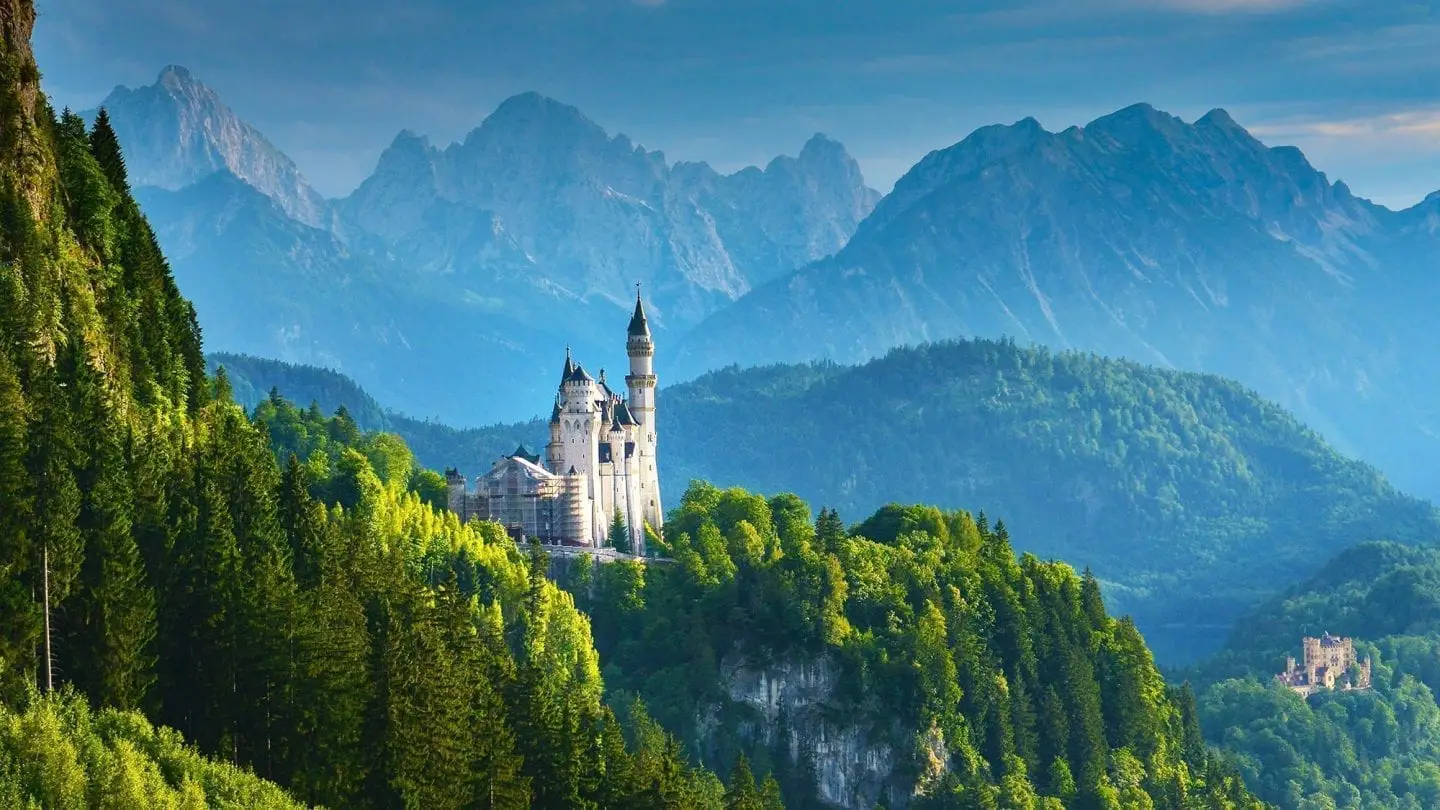
Ah, Europe.
The land home to ancient history, pizza, beautiful beaches and first world public transportation.
In my teens, I dreamt of travelling to France and living out my own Passport to Paris fantasy. I wanted to go on a subway, peer through the gates of Buckingham Palace, and see my favourite bands play live at Download Festival.
For years, it remained a dream I never acted upon.
I knew Europe wasn’t a cheap place and had the mindset that I’d never have enough money to go.
Fast forward almost a decade later, and I’ve been to Europe not once, not twice but three times.
And I didn’t have to sell everything I own or work crazy long shifts in shitty retail jobs to make it happen.
Curious about how to visit Europe on a budget?
You just need a dash of flexibility, a sprinkle of planning and a cup of frugality to get the most out of your Rands.
Here’s how to travel Europe on a budget!
Table of Contents
How to Find Cheap Flights From South Africa to Europe
When is the best time to travel to europe on a budget, fly with budget airlines, travel europe via train, use cheap bus travel in europe, save time finding the cheapest transport option, try out blabla car, use public transportation, hit the pavements, find deals on booking.com, live like a local with airbnb, become the ultimate backpacker with couchsurfing, cook your own meals, stay at a hotel or hostel that offers a free breakfast, keep an eye out for lunch specials, eat where the locals eat, eat street food, visit the cheaper european destinations, compare tourist passes, cheap things to do in europe, use atms instead of currency counters, get yourself a credit card that doesn’t charge for international withdrawals, use your credit or debit cards, travel with two cards and keep them separate, travelling europe on a budget is possible.

Have you experienced the phenomena of internally sobbing while typing in each digit and watching your bank account run dry?
You’re not alone.
Before I discovered flight comparison site Skyscanner , I thought the only way I could go to Europe was if I signed up for those ridiculously priced Contiki Tours.
Since then, I’ve picked up a few other tricks on the way that have helped me find return flights to Portugal and Italy for under R 5000.00.
How did I do it?
I’ve written an in-depth 9-step process blog post , but the main tool in my cheap flight arsenal is Skyscanner’s “Everywhere” tool.
All you need to do is enter your departing destination as “South Africa” and your arrival destination as “Everywhere”.
The search engine will then find the cheapest flights departing from South Africa. It’s an easy way to see what deals are flying around and which European destination will be the most affordable entry point.

The best time to visit Europe on a budget is during its low season. From November to March, you’ll find low hotel rates, cheap flights and far fewer people hogging the best sites. It’s the perfect trifecta if you want to stretch your money as much as possible while travelling Europe on a budget.
Plus, it’s winter. So you can finally see snow!
Get ready to make those snow angels, learn the lyrics to “ Do You Want To Build a Snowman ” and develop an appreciation for thermal underwear.
The only exception during low season is the Christmas and New Year holidays. Prices do peak again especially in countries like Germany that are famous for their Christmas markets and traditions.
If you’re more of a summer child or you hate wearing layers, plan your trip to Europe between April to May or September to October.
These are Europe’s two shoulder seasons. Temperatures and prices are slightly higher for these months, but it’s still way more affordable than Europe’s popular high season.
Speaking of the high season, that’s the one you want to avoid if you’re travelling Europe on a budget. From June to August, prices skyrocket.
I’m talking R 2000+ for a one hour flight that’s typically R200-R300.
With so many people heading to Europe for summer, hotels and hostels double their prices.
I paid EUR 50 for the shittiest dorm room in Rome that’s usually less than half that price.
But if you can’t avoid travelling to Europe in the summer, then it all comes down to picking the right destination.
More about that below.
What’s the Cheapest Way to Travel Europe?
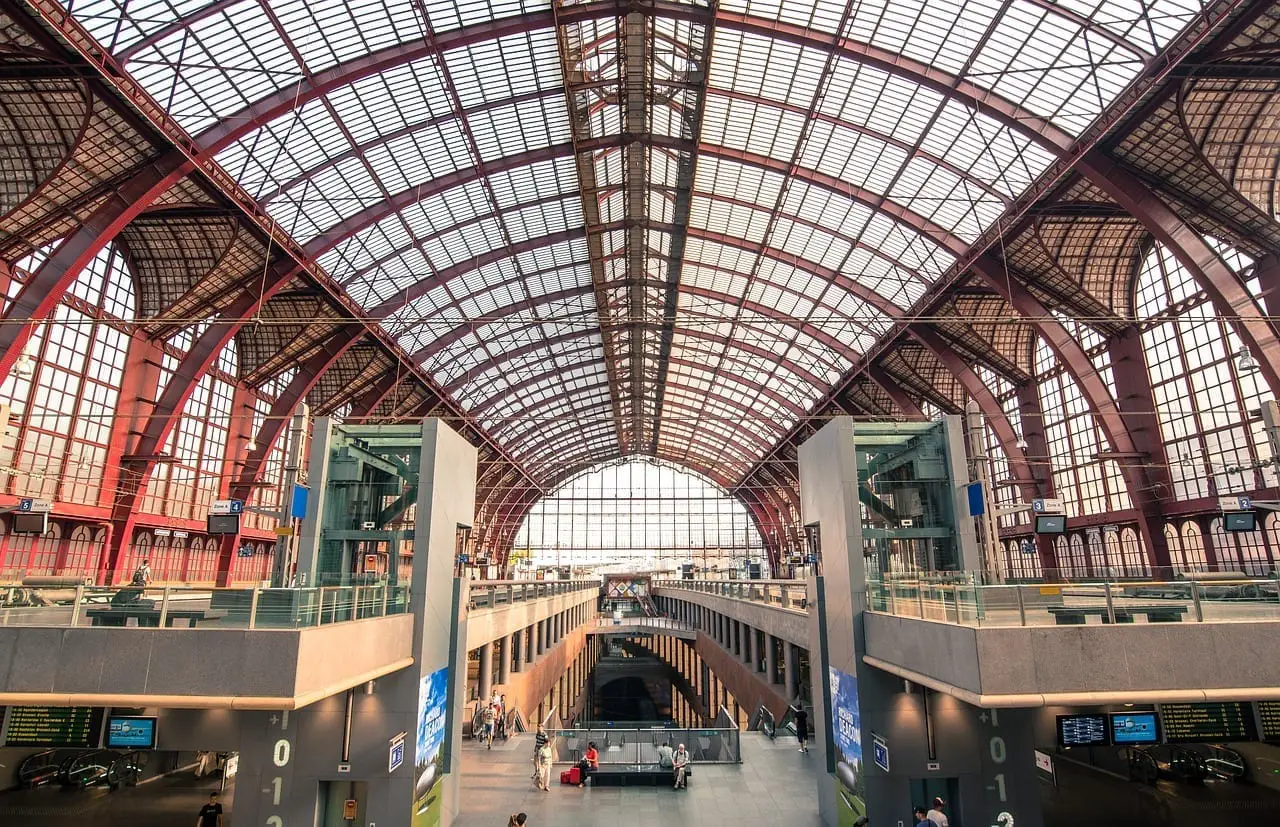
You know what’s a great feeling?
Paying R 300 for a RETURN flight between Italy and Germany.
But if you want to reap those savings, you need to book your flights in advance – especially if you’re travelling Europe during high season.
For example, that same exact flight will end up costing you around R 1,400 in July.
With so many budget airlines, flying is the best way to travel Europe on a budget. Plus, it will help you get to your next destination faster!
Read More: 3 Insanely Cheap Ways to Travel Europe in 2022
Want to explore Europe at a slower pace?
Hop on board one of the hundreds of trains that zigzag across the region!
Take a high-speed train between Amsterdam and Belgium, travel around Italy or use it as a way to see more of the countryside.
The only downside is that train travel is that it’s not the best option for transportation in Europe on a budget.
Greg and I paid EUR 100 (R1,500) for our train trip from Berlin to Amsterdam (full guide dedicated to train travel in Europe is coming soon!).
The high season definitely impacted the cost of our ticket. In fact, when I checked back a week later, the price had almost doubled.
If you want to explore multiple European countries by train, the Eurorail Pass can work in your favour. It’s valid for 28 countries and offers multiple days of travel extended over a month or two.
But it will make you poor.
Keep a look out for discounts if you’re under 26 and book your tickets well in advance to maximise your savings.
Bus travel in Europe is not for everyone – but it’s cheap.
You can travel from Munich to Nuremberg for as little as EUR 6 (R 94.00) with Flixibus, making it the best way to see Europe on a budget if you’re not on a time crunch.
I used them for my trip between Berlin and Krakow.
Eurolines is another affordable long-distance bus I used to get back to Berlin from Amsterdam.
That trip cost me EUR 25 (R 394.00).
Want to save even MORE money?
Book an overnight bus or train and save on a nights accommodation.
With so many budget flights, trains and bus companies – finding the cheapest way to travel Europe is a pain.
Unless you use Rome2Rio .
It quickly became the butter to my bread pre-trip and during my adventures around Europe.
All you need to do is pop in your departure and arrival destination, and the search engine will find the cheapest flights, train and bus fares.
Never heard of BlaBla Car ?
It’s a carpooling service in Europe that connects drivers with empty seats to people travelling the same way.
For most South Africans, that just sounds like a bad idea.
But it’s a thing in Europe and people actually get to their destination in one piece.
So when in Rome…
Select your driver based on their level of chattiness (introverts who hate small talk unite!), their music preferences, smoking or non-smoking and even if pets are in the car.
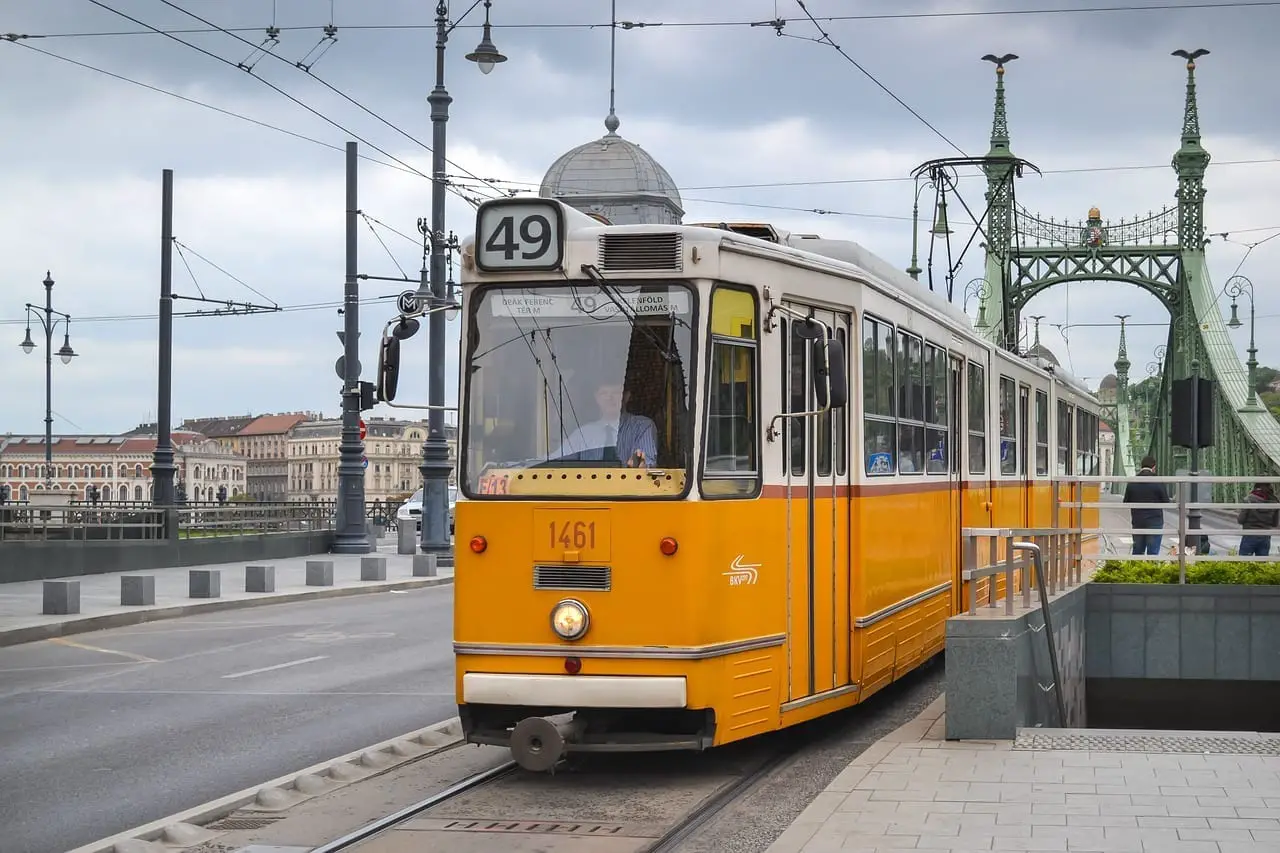
Public transport in European cities is extensive and cheap.
It’s one of my favourite things.
I don’t know what it is about subways, but I love them.
If you’re planning to use it a lot, do some research to see if there is a day pass you can buy.
Italy, Berlin and Amsterdam all had various options I used while in those countries.
- It cost me EUR 7 (R 110.00) for a 24-hour pass in Rome ;
- In Amsterdam, I bought a 48-hour pass for EUR 12.50 ( R197.00) and;
- In Berlin, I spent EUR 2.80 ( R44.00) for a 2-hour ticket and EUR 7 ( R110.00) for a day pass.
In some countries, the day pass will include public transportation to and from the airport.
If you buy a tourist travel card, like the Berlin Welcome Card, you’ll get unlimited public transportation included in the price.
More about the tourist cards later on.
But the ultimate way to keep your transportation costs low while travelling Europe on a budget is to walk EVERYWHERE .
The good news is that a lot of European cities are terribly flat.
Factor in that a lot of the attractions around the city centres aren’t that far apart, and your Samsung Health App step count won’t know what hit it.
How to Find Budget Accommodation in Europe
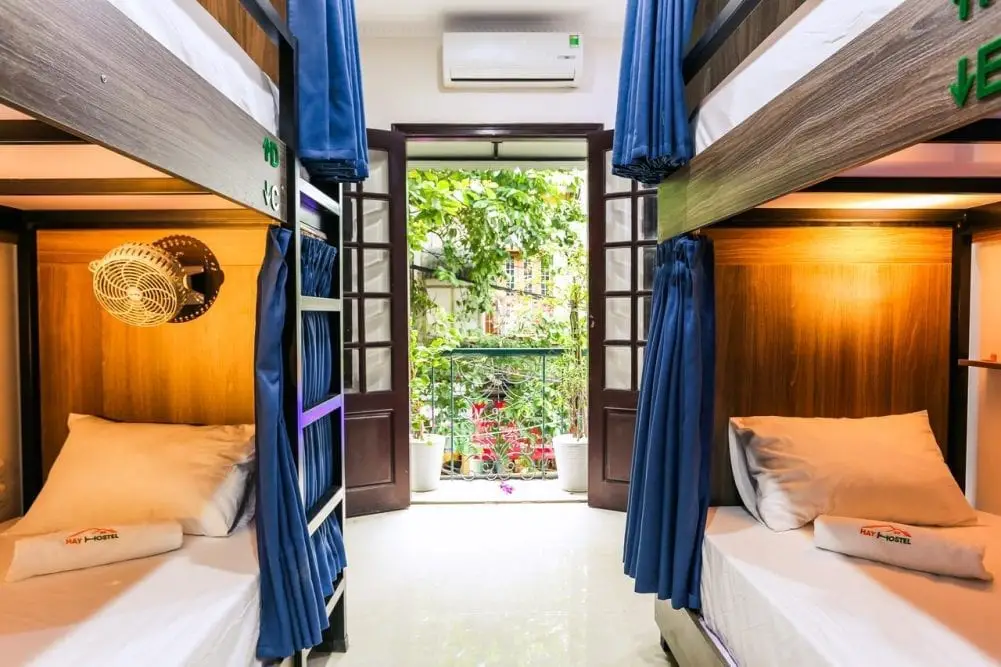
Okay, so besides your flights, accommodation is going to be your biggest cost.
If you’re struggling to find hotels within in your budget, consider staying outside of the city or in a smaller town and commuting in.
Below, I’ve listed the sites I use the most while travelling on a budget in Europe.
Booking.com is by FAR my favourite accommodation site.
It has everything from low-budget hostels to swanky five-star hotels. You can filter the search results to see places that offer free breakfast or are a close distance to a particular landmark and more.
If you use the site often enough, you’ll eventually unlock their Genius tier and get discounts as well as special perks.
I stayed in an Airbnb apartment during my 3-week trip to Sicily. It had everything I needed and quickly felt like home.
Prices on Airbnb aren’t that expensive especially if you travelling with a friend. Some cities even have “hostels” where hosts have a room with multiple bed bunks.
I found one in Paris within walking distance of the Eiffel Tower, and it didn’t cost my entire salary.
So if you’re not a fan of hostels and want to blend in with the locals, browse through the listings to see what’s available for your travel dates.
Couchsurfing is the mecca for backpackers.
It’s a way to stay in a city without paying a single Euro for your board.
Yip. FREE accommodation in Europe!
All you need to do is sign up, create an account and start reaching out to hosts available during your travelling dates.
If you’re worried about safety, only stay with hosts that have been verified by Couchsurfing and have tons of positive reviews by other surfers.
I’ve couch surfed in South Africa, Turkey and kinda in Germany and the Netherlands.
One of my followers on Instagram offered to host me in Amsterdam. For Berlin, Greg’s old colleague from South Africa happened to be in town and had a spare bed.
That still counts, right?
How to Save on Food Costs in Europe

Head to the nearest supermarket, grab your favourite things and get your chef on.
It’s the cheapest way to feed yourself in Europe.
I spent EUR 20-25 ( R 315.00 – R 394.00) on groceries that lasted me the entire 3-weeks I stayed in Sicily.
And yes, the majority of my meals were some kind of pasta.
Breakfasts at hostels are usually continental.
But free food is free food, and it should keep you fuelled up until lunchtime.
If you’re staying at a more posh hostel or a hotel, your breakfast will probably include a continental with a few other things like eggs, baked beans and some meat.
If you’re travelling to Rome , save money by taking advantage of the city’s lunch specials.
For EUR 10 (R 157.00), you can get a starter, a main and your choice of beer or house wine.
With most main meals costing EUR 8 and a glass of wine usually around EUR 6-7 (R 94.00 – R110.00), it’s an excellent deal.
Stray from the well-trodden path and find restaurants that are full of locals instead of other tourists.
The prices are usually lower, and you’ll have a more authentic experience.
If you’re going to Europe on a budget, street food will make its way into your diet.
From the delicious arancini balls in Italy to Poland’s famous Maczanka sandwich – there are cheap eats for your taste buds to discover in every country.
Read More: 50+ Genius Ways To Save Money for Travel
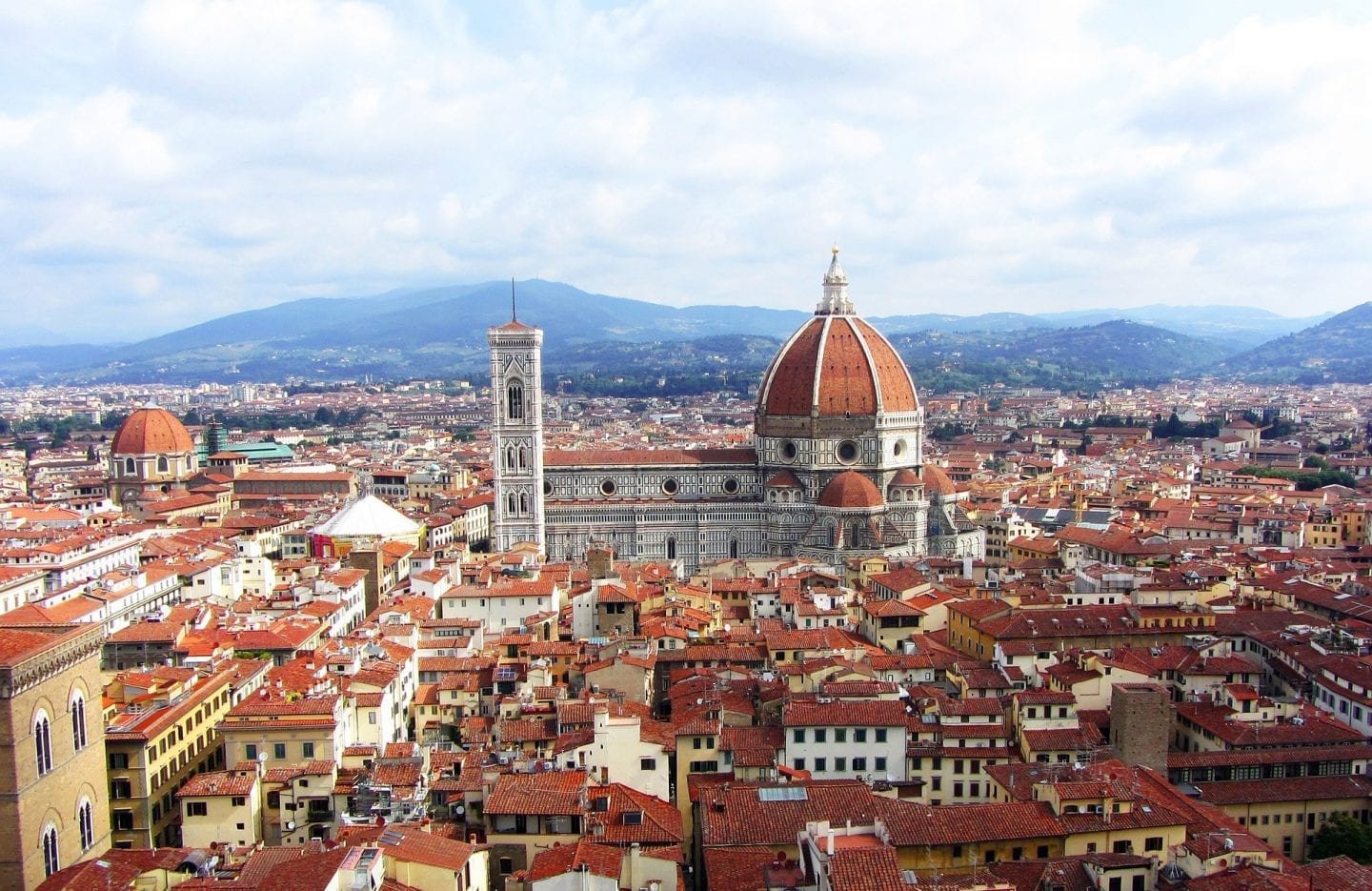
Not all European countries are created equal.
Some like the Netherlands will evaporate all your hard-earned savings in the blink of an eye.
While your money will stretch much further in countries like Poland or Romania.
Where to travel in Europe on a budget:
- Prague, Czech Republic
- Gdansk, Poland
- Rome, Italy
- Porto, Portugal
- Budapest, Hungary
- Tallinn, Estonia
- Transylvania, Romania
- Berlin, Germany
- Istanbul, Turkey
- Saranda, Albania
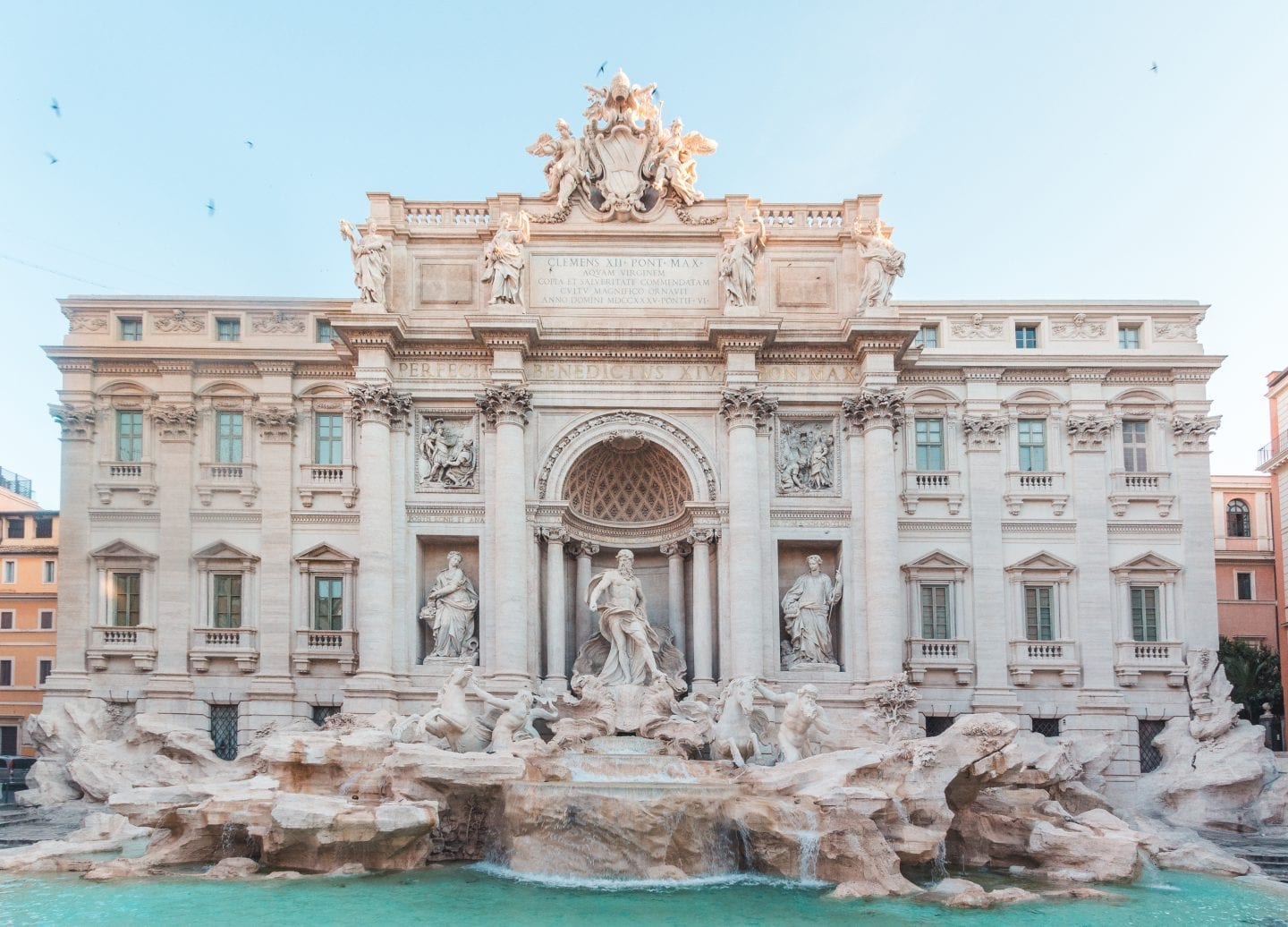
Tourist Passes are travel cards specifically designed for, well, tourists.
The perks of buying one include:
- Unlimited use of public transportation.
- Free entry to specific museums or attractions in that city.
- Discounts for restaurants, tours and other attractions.
- Transportation to and from the airport.
- Access to the city’s hop-on-hop-off bus.
If you’re only in one city for 24, 48 or 72 hours, these cards pack A LOT of value.
But before you flip open your purse and pop out your credit card, do your research to see if it’s actually WORTH the money.
If you’re a museum geek and you want to go to the museums that come with the card – it’s a no-brainer.
But when you’re travelling Europe on a budget, it might work out cheaper to skip the card and do your own thing.
That’s what I did for Rome.
Instead of getting the Roma Card, I walked everywhere, bought one 24 transport ticket and only went to the free attractions .

You don’t need to spend a hella lot of money.
There are loads of free things to do.
And that’s music to any cash-strapped South African’s ears travelling Europe on a budget.
Here are just SOME of the things you can do for mahala:
- Visit museums and galleries with no entrance fee.
- Check to see which day the museums are free. For, e.g. The Vatican Museums are open for free on the last Sunday of every month.
- Sign up for a free walking tour.
- Explore some of the ancient cathedrals and churches.
- Go to a free concert. E.g. Amsterdam hosts free shows every Tuesday from September to May.
- Wander past a city’s free monuments. E.g. The Trevi Fountain in Rome won’t cost you a dime and neither will that iconic selfie with the Eiffel Tower.
- Head for the hills and go on a hike.
- Grab your bikini and catch some rays at the beach.
Read More: How To Travel Rome on a Budget (& Still See the Top Sights!)
Managing Your Money For a Budget Trip to Europe
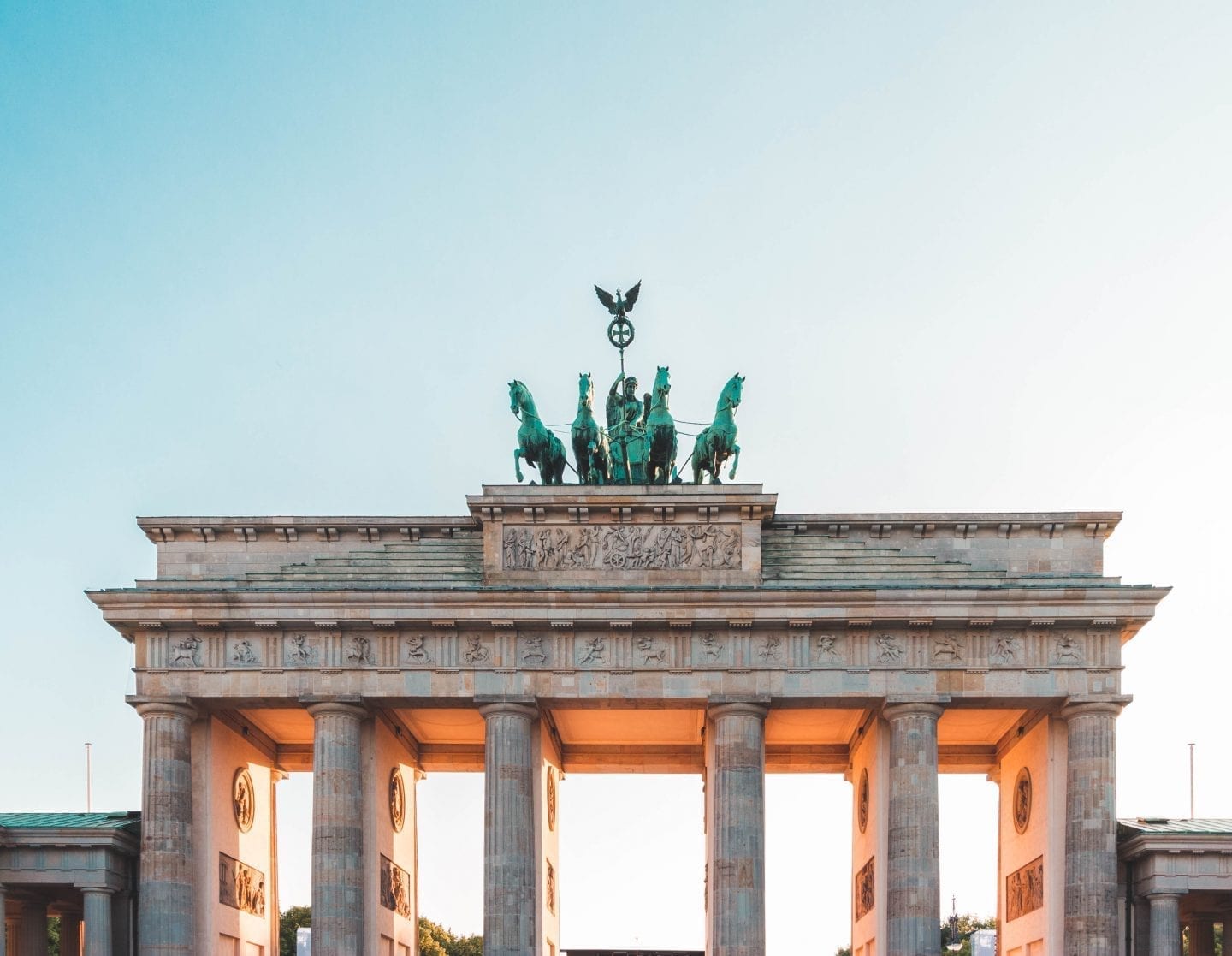
When you’re dealing with the terrifying exchange rate that is Rand to Euro – you need to make every last penny count.
Here are a few simple money tips to use while travelling Europe on a budget:
You’ll get a better rate of exchange. Currency counters at airports add a markup for their services that you don’t need in your life. Call up your bank before you leave South Africa, and unblock your card for international usage.
All those little fees start to add up each time you go to the ATM. If you can’t get a card that doesn’t charge, try to find one that has minimal fees or limit the number of times you withdraw cash.
Most credit and debit cards have a strong exchange rate. Try to get a card that doesn’t include fees for foreign purchases or has the lowest surcharge.
I learnt this lesson in Chiang Mai. Three days before my flight back to South Africa, an ATM ate my card, and I only had THB 2,000 to my name. I still had to buy food, pay for accommodation and transportation to the airport. Since then, I make a point to travel with two unlocked cards and keep one in my suitcase and the other in my purse.
Read More: A Magical 2-Days in Lisbon Itinerary (Including a Sintra Day Trip)

That was a monster of a post.
If you’ve made it this far down, kudos to you my friend.
I hope you’ve found it useful and you feel budget travel in Europe is possible for you!
Enjoy your trip and remember, it’s totally acceptable to eat your weight in gelato while you’re there.
Want more Europe travel inspiration? Check out my other posts:
- How to Travel Rome on a Budget as a South African
- Amsterdam Coffeeshops: How to Get Stoned Like a Pro
- How to Get From Paris to Versailles & Plan The Perfect Day Trip
- How To Visit The Vatican (A Massive Travel Guide)
- How to Apply for Your Schengen Visa
- 16 of the Best Rand-Friendly Holidays Destinations in Europe
Did you find this post useful? Save it for later on Pinterest!
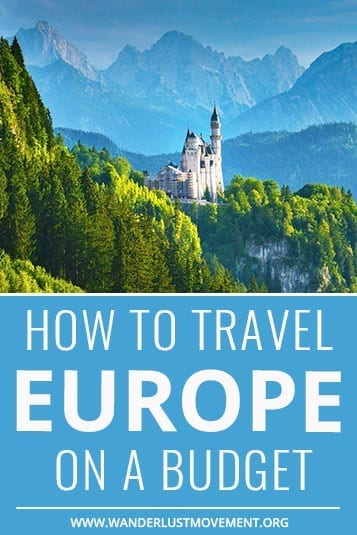
About Lauren Melnick
Lauren Melnick is the founder of Wanderlust Movement, Wander to Here and is a South Africa travel blogger. She's been travelling the world as a full-time freelance writer since 2016 and has visited over 40 countries.
When she isn't typing up a storm, you can find her conquering overnight hikes around the Western Cape, rock climbing, and hosting sold out group travel trips around South Africa, Namibia and Morocco.
Reader Interactions
July 28, 2018 at 6:31 pm
Very informative post! Great tip to take buses! Love trains, but buses are probably cheaper.
March 1, 2019 at 10:43 am
I would strongly recommend traveling through Europe on foot. Because Europe is such a densely packed continent there’s always something to explore, especially when you are hitchhiking.
Just make sure to bring a few essentials with you. Some rain gear is a good idea, though many just decide to sit out the rain. Sometimes you might not be anywhere near a hotel or inn when it’s getting dark. That’s why you should bring a small tent and sleeping bag with you.
March 7, 2019 at 9:38 am
Coming from a country like South Africa, I don’t think I would be able to wrap my head around hitchhiking and not getting murdered lol
April 12, 2019 at 4:18 pm
Hey, so I’ll be travelling around Europe and I’ve been look at Stoke Travel for accommodation. Thoughts? have you ever heard of them or stayed with before?
April 15, 2019 at 8:41 am
Hey! I’ve never heard of them before, but it does look interesting if you’re wanting to experience the music festivals and parties of Europe 🙂
February 18, 2020 at 4:14 pm
aLOVE the info. baie dankie
February 18, 2020 at 4:24 pm
Glad you found it useful 🙂
January 11, 2023 at 3:11 am
I love this blog! It’s so helpful and informative. I’m currently planning my first trip to Europe and this blog has been a huge help!
May 26, 2023 at 2:58 pm
thanks for all the infos, its very hard sometimes to travell when you dont have money :/ i also start using this app and i can highly recommend it to you 🙂 its called “ATM Fee saver” and its soo good and easy to use. its shows me atm around wiht no or low fees for withdrawing money. thats how i also save a bit of money while travelling
Leave a Reply Cancel reply
Your email address will not be published. Required fields are marked *
This site uses Akismet to reduce spam. Learn how your comment data is processed .
Travelling is ultimately a tool for growth. If you want to venture further, click this banner and take the leap 😉
- Meet the Team
- Work with Us
- Czech Republic
- Netherlands
- Switzerland
- Scandinavia
- Philippines
- South Korea
- New Zealand
- South Africa
- Budget Travel
- Work & Travel
- The Broke Backpacker Manifesto
- Travel Resources
- How to Travel on $10/day
Home » Budget Travel » How to Travel Europe Cheaply: Get Around on a Budget in 2024
How to Travel Europe Cheaply: Get Around on a Budget in 2024
The most important step to becoming a badass broke budgeteer: learn the wicked ways of the low-cost lifestyle. Meaning, HOW exactly to travel on the cheap-o.
And there’s no better way to get used to budget backpacking than learning how to travel Europe cheaply .
Europe is a great teacher in the ways of penny-pinching. Compared to other popular backpacker digs like Southeast Asia and South America, Europe is expensive as hell. You’re usually only one careless “treat yo’ self” away from backpacker bankruptcy. Everything has a cost: even using a public bathroom!
That means you have to be wise and wily with the way you spend your dollars.
Luckily, there are many ways to slash your astronomical Europe budget down to shreds and have a grand old time traipsing across the old continent, while spending relative pennies!
Transport is easily one of the biggest expenses on your trip. So, today I’m teaching you, dear young padawans, the ins and outs of travelling around Europe on the cheap.
On the cheap – and even, believe it or not, FOR FREE.
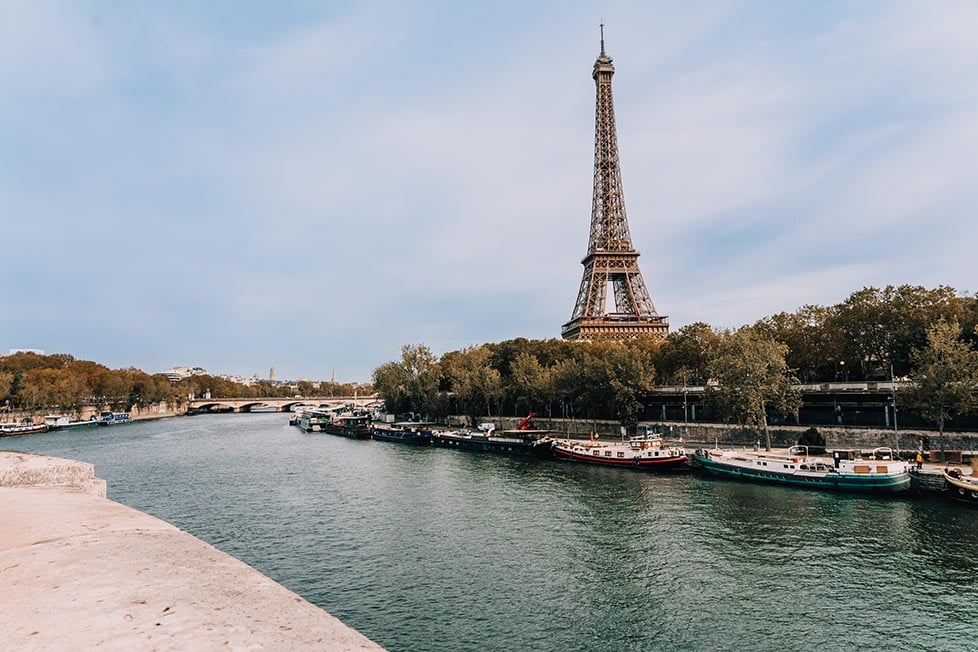
The Broke Backpacker is supported by you . Clicking through our links may earn us a small affiliate commission, and that's what allows us to keep producing free content 🙂 Learn more .
10 Ways to Get Around Europe on the Cheap
No money no problem.
Learning how to travel Europe on a budget comes down to a few tricks: cook your own food, stay in hostels or couchsurf, and take advantage of free things to do (each European country has heaps!).
However, when you’re trying not to break the bank, transportation may often be your Achilles’ heel, your downfall, and your sweetest enemy. Here are the best ways to travel Europe on a budget.

Do You Want to Travel FOREVER??
Pop your email in below to get a FREE copy of ‘How to Travel the World on $10 a Day!’.
1. Catch a Cheap Bus
Taking the bus is probably the cheapest way to travel around Europe. It’s easy to find budget options all over Europe – even for long distances.
One of the most popular options for cheap bus travel is Flixbus . It’s an operator so efficient, it is quickly swallowing up other smaller national low-cost bus operators all over Europe.
Flixbus has probably the most extensive options: over 2,500 destinations across 35 countries (even Turkey!).
And my dude, just wait till you see their prices. They’re staggeringly low! I once took a 14-hour bus ride across the entire northern Spain to France for just $30.
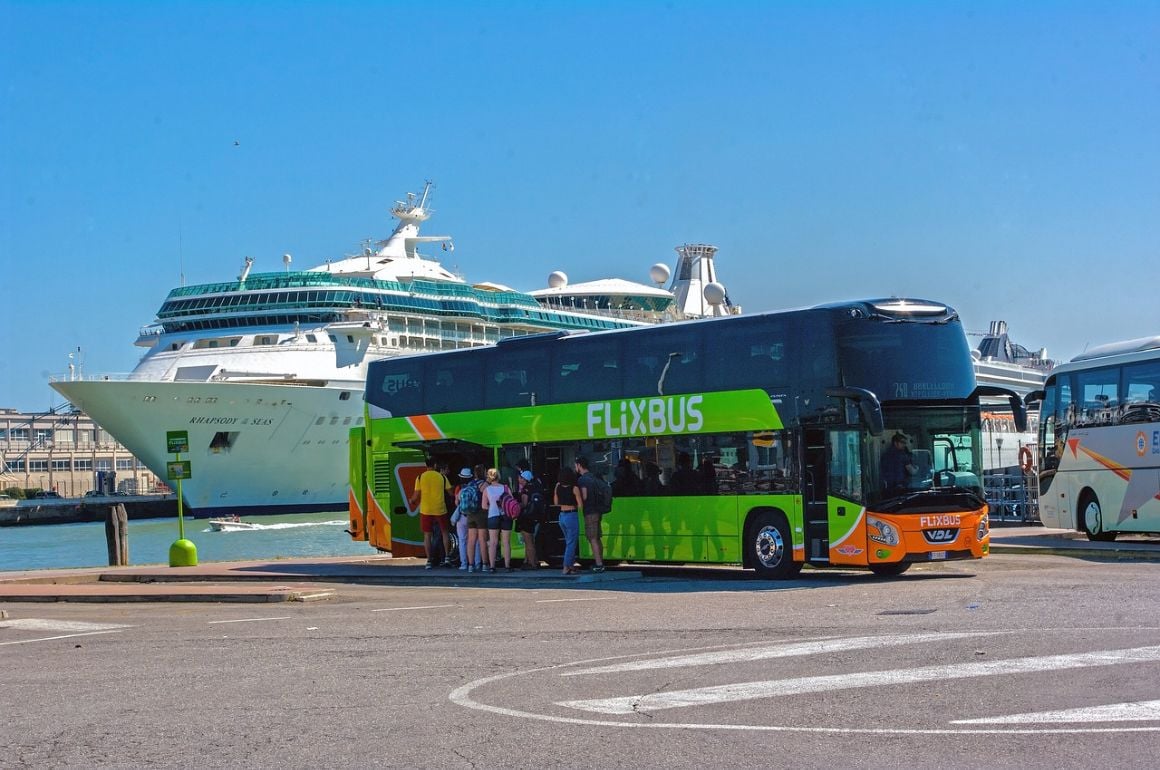
Other great options are Eurolines (everywhere), Megabus (the UK), and Lux Express (the Baltics). Many countries also have their own low-cost buses mostly operating nationally, like Polskibus in Poland and Onnibus in Finland.
You can always find deals, but your best bet on dirt-cheap tickets is to book early. There is a limited amount of the cheapest discount tickets for each route.
Bonus tip: Take the word of a seasoned backpacker when I say that night buses SUCK. However, they save you a night’s accommodation cost. Plus, they make sure you’re not wasting precious daylight hours on travel time if you’re only travelling for a short time.
EDITOR’S NOTE!!!
Bookaway is another supreme service that we strongly recommend for booking routes and rides across Europe. HOWEVER, their service isn’t available in all European nations. Your best bet is to check out both services, compare prices and services available, and choose the best (and cheapest) for you!
2. Get Railed with a Train Pass
Travel around Europe by train , also known as interrailing, is a super popular way of backpacking across Europe.
Few other places have a similar opportunity for train travel. Europe has very extensive rail networks, and usually, its trains are clean, fast, and comfortable. (At least in Western Europe – who the hell knows what’s up with the Communist-era clunks clanking around post-Iron Curtain countries.)
In Western Europe though, rail travel gets EXPENSIVE. It’s not out of the question to have to splash $60 for a simple cross-country ticket. That’s why a lot of broke train travellers get a rail pass that lets them get serious discounts on their journeys.
Using a rail pass does come with a bit of planning. Usually, they’re restricted to a certain region or cluster of countries, and their prices depend on which countries you want to check out. (More expensive countries have more expensive rail passes.)
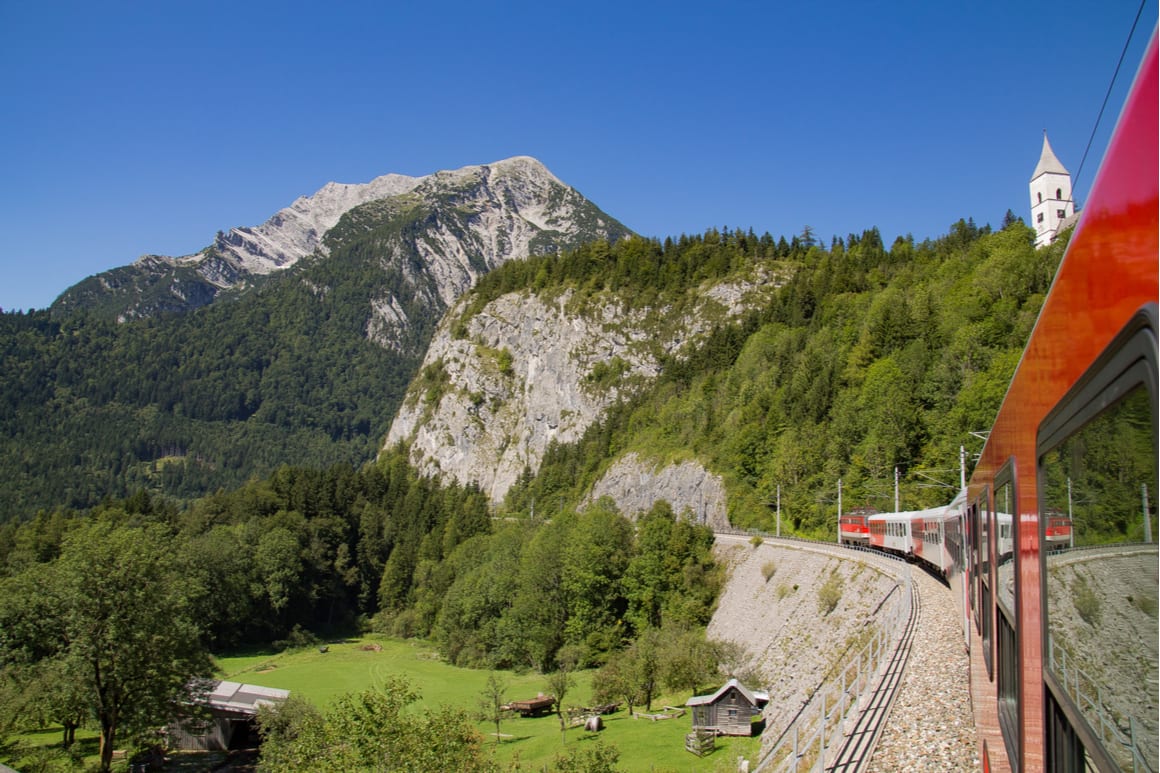
They also come with conditions. You can only have a certain amount of travel days within a time frame. (E.g. 10 travel days in two months.) That means that you can use the pass for unlimited free travel for 10 days over a period of two months.
Getting a rail pass is not worth it everywhere in Europe. If you mainly plan to hop to countries that are not covered by the rail pass, or that don’t have great rail networks, you can get by fine without one.
Also when you’re adventuring somewhere like Eastern Europe and the Balkans, the few train options you have are already cheap. That might mean overspending by getting a pass.
However, if you plan to check out places like France, Germany, and Austria, a rail pass is a great addition to your Europe packing list . And it saves you a lot!
3. Catch Flights, Not Feelings
Listen, no other place does low-cost flying quite as well as Europe. The prices for low-budget airlines can be absolutely RIDICULOUS. Route prices start at around $8 – no kidding. When I still lived in Finland, a return flight between my city and London was half the price of a one-way train to my hometown!
So, low-cost airlines are definitely worth checking out if your plans include hopping between countries on different sides of Europe.
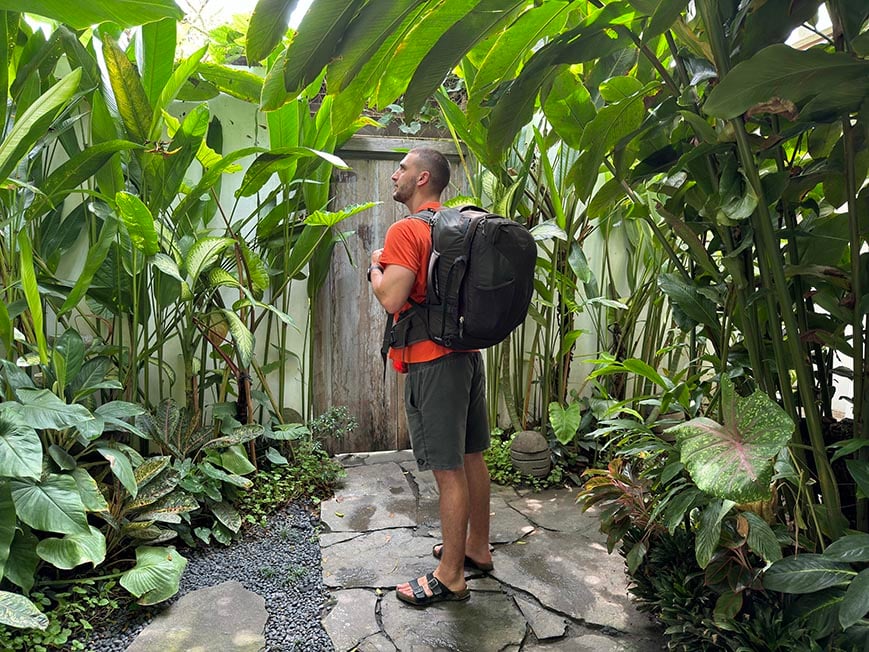
Some of the most popular low-budget airlines in Europe are:
There is an art to finding cheap flights . But you’ll get a hang of it quickly. My favourite sites for finding and comparing flight prices are Skyscanner and Momondo.
I highly recommend checking airlines’ own websites around holidays as well. Around Christmas and Black Friday, you can find huge discounts.
Sadly, there is no such thing as an almost-free lunch. Low-fare airlines make their money through extortionate extra fees. Everything costs – from meals onboard to even printing your boarding pass at the airport. Checked baggage can cost $30+, and some charge extra for “big” cabin luggage as well.
4. Share a Ride with a Merry Stranger
Travelling solo? So are many others! Cut costs and maybe make a friend on your intercity travels.
When you think of rideshare apps, you probably think of Uber. Taxi apps are dope for getting around cities in Europe on the cheap for sure.
Mostly getting a cab through an app is cheaper than on the street. Uber operates in many European countries, plus there are tons of smaller operators in different countries and regions.
So, rideshare apps are cool beans in cities. What about between cities?
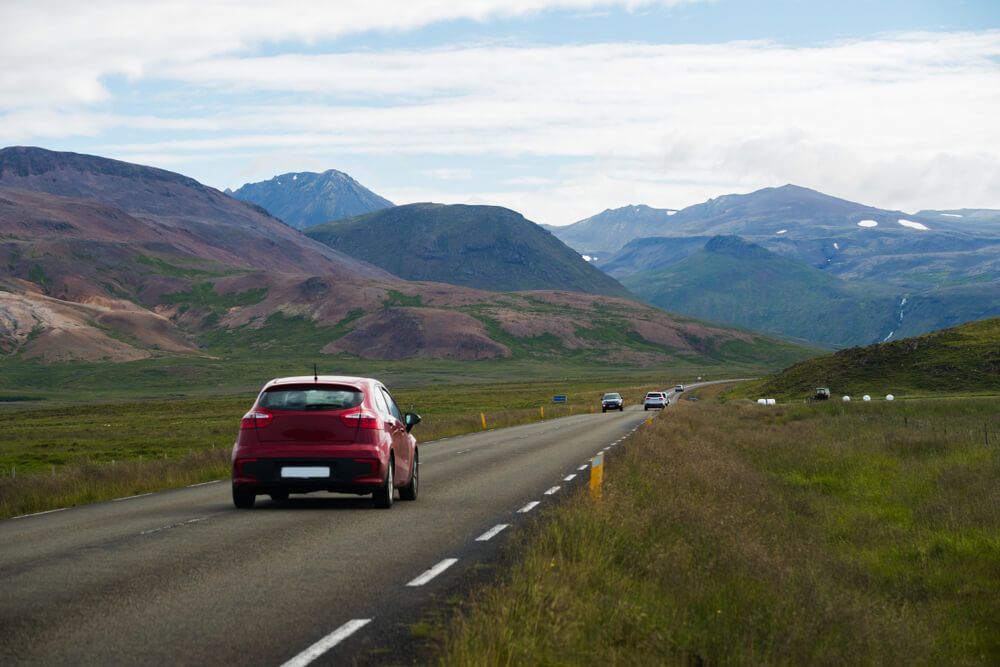
Europe also has platforms that allow private people to publicly post their upcoming trips. They post that they’re going to Marseille, you get in touch, and ka-ching ! You’ve got a cheap-ass ride to another town. Note that this is not digital hitchhiking; you’ll have to split travel costs with the driver and other passengers.
The absolute best platform for long-distance rideshares is BlaBlaCar . I found it the best cheap way to travel around Spain and France, but it’s also available in 16 other countries in Europe. BlaBlaCar doesn’t actually have any of its own cars; it’s just a platform connecting drivers and passengers.
If BlaBlaCar doesn’t tickle your fancy, it’s always possible to find rideshares and carpooling through other ways as well. Try posting a note on your hostel’s info board, or find a rideshare group on Facebook for the country that you’re in.
5. Go Drive Yourself
Living the vanlife in Europe is many backpackers’ dream. And it can easily be one of the cheapest ways to travel Europe if you’re exploring countries like Switzerland or Norway.
My motorbike-loving friends won’t stop raving about how great it is to ride your bike down the wide-open highways across Europe. (Somewhere in the distance, Born to Be Wild starts playing…)
Plus, driving yourself gives you the greatest flexibility to stop at cute roadside towns. You can come and go as you please without being held behind by such measly human inventions as – pssht – bus schedules. Bonus points if you camp along the way to cut costs even more.
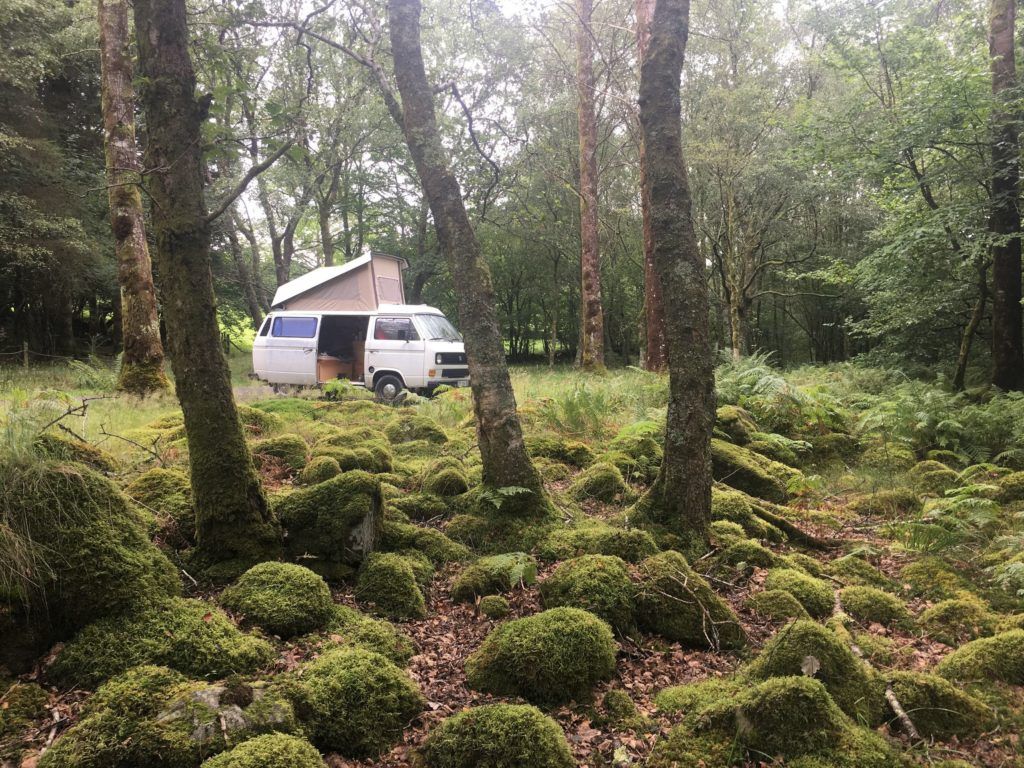
If you’re planning on a self-directed adventure, there are a few things to consider before launching off:
- You’ll either need an international driver’s licence or an EU licence
- Taking rental cars over the country border is usually not allowed . So they’re best for single-country stretches. You also have to return them to the same office where you picked them up or pay an abysmal extra fee.
- Toll fees stack up! Set up your GPS to avoid toll roads. (But make sure that it doesn’t direct you to completely stupid roads – speaking from experience…)
In the end, you might do campervanning or motorbiking more for the experience than the price. You’re not only paying for the car; petrol, parking, and insurance fees rack up.
While rentals can be very cheap, they can also be very, very expensive. $20 a day in Greece is not too bad if you can split that with a travel buddy. But paying $50 a day in Madeira by yourself is gonna make even the toughest traveller cry bitter tears. So if you’re gonna live the vanlife across Europe, find a smart purchase or rental (not cheap – cheap cars don’t last), and get good at the van-bum life: it’s a good life. 🙂
6. Thumbs up, Everybody
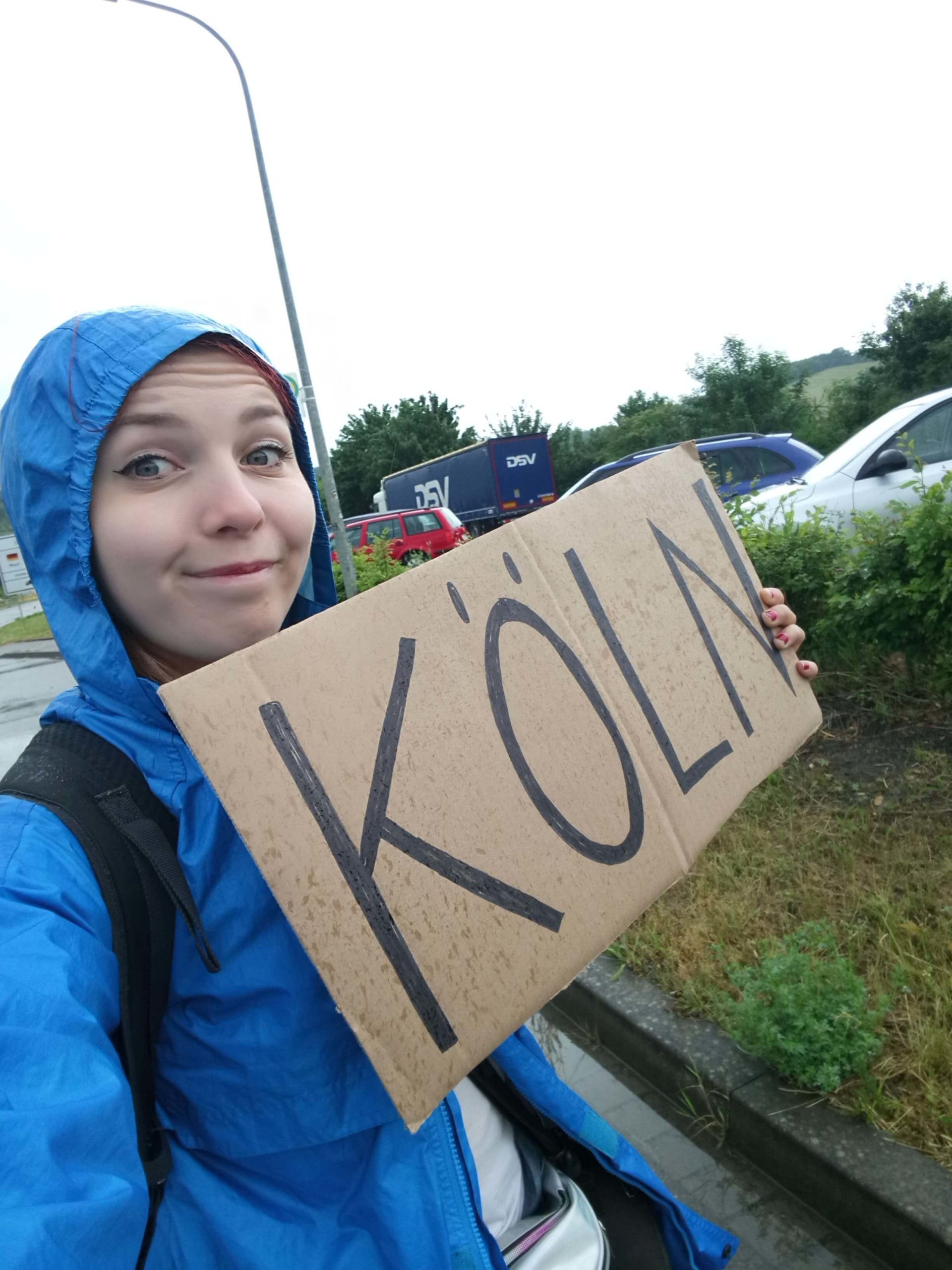
You might’ve thought you dreamed it but there IS a legit way to travel Europe for free. That way is called hitchhiking ! Is this the cheapest way to see Europe? Potentially definitely.
Hitchhiking has long been one of my favourite ways of adventuring. And the scene is especially boomin’ and bloomin’ in Europe.
It’s not for everybody: you gotta be at least a bit of a social butterfly to keep your gracious rides entertained with small talk (and big talk, if it comes to that).
This becomes especially fun when you don’t speak the same language. But let me tell you, it’s surprising how much you can find out about someone’s family, hobbies, and life just through a few universal words and body language.
And sure, hitchhiking is not completely without its risks, either. I’ve done lots of kilometres in strangers’ cars as a solo female traveller . While 95% of the people who pick you up are just simply kind human beans, I’ve had a few creepy encounters as well.
The best countries to pick up lifts are in Central and Eastern Europe. The worst luck I’ve ever had has been in Spain and Germany – basically Western countries with a lot of motorways that are unsuitable for stopping for thumb-riders.

Wanna know how to pack like a pro? Well for a start you need the right gear….
These are packing cubes for the globetrotters and compression sacks for the real adventurers – these babies are a traveller’s best kept secret. They organise yo’ packing and minimise volume too so you can pack MORE.
Or, y’know… you can stick to just chucking it all in your backpack…
7. Compare, Compare, Compare!

No one ever said budget travel in Europe was easy. Counting pennies comes with a lot of time spent crouching over your phone screen, figuring out the routes that are going to save you the maximum amount of time and money. Trip planning takes effort.
Sometimes booking through the airline’s or railway’s own website is the cheapest option; sometimes the best deals are found on third-party websites. Occasionally, a train can actually be a lot cheaper than a bus.
Sometimes – and this is a secret most hardcore shoestring sailors won’t tell you – it’s just simply better to choose the more expensive option, for the sake of pure convenience and your sanity.
Rome2Rio is a great planning tool when you’re trying to find routes from city to city and can give you approximate prices on both buses and trains. But you have to book tickets on the sites of the operators themselves. Omio (former GoEuro) shows you comparisons between train, bus, and air travel, but doesn’t actually show all available tickets from low-cost operators.
8. Take a Hike, Buddy
When you’re thinking about how to travel around Europe cheaply, long-distance hiking is actually a very viable option. If you can find a free camping spot, all you end up paying for is your food.
Obviously, it’s hard to cover long distances on foot. It IS slow as hell, but it is one of the most rewarding ways to travel I’ve ever tried.
Europe is a hikers’ wonderland. Long, well-established trails can be found almost in all countries, and many long-distance trails stretch over borders as well. Long-distance hiking might be an option for you if you’re already reasonably fit, you’re prepped for hiking abroad , and can carry all your stuff in one bag.
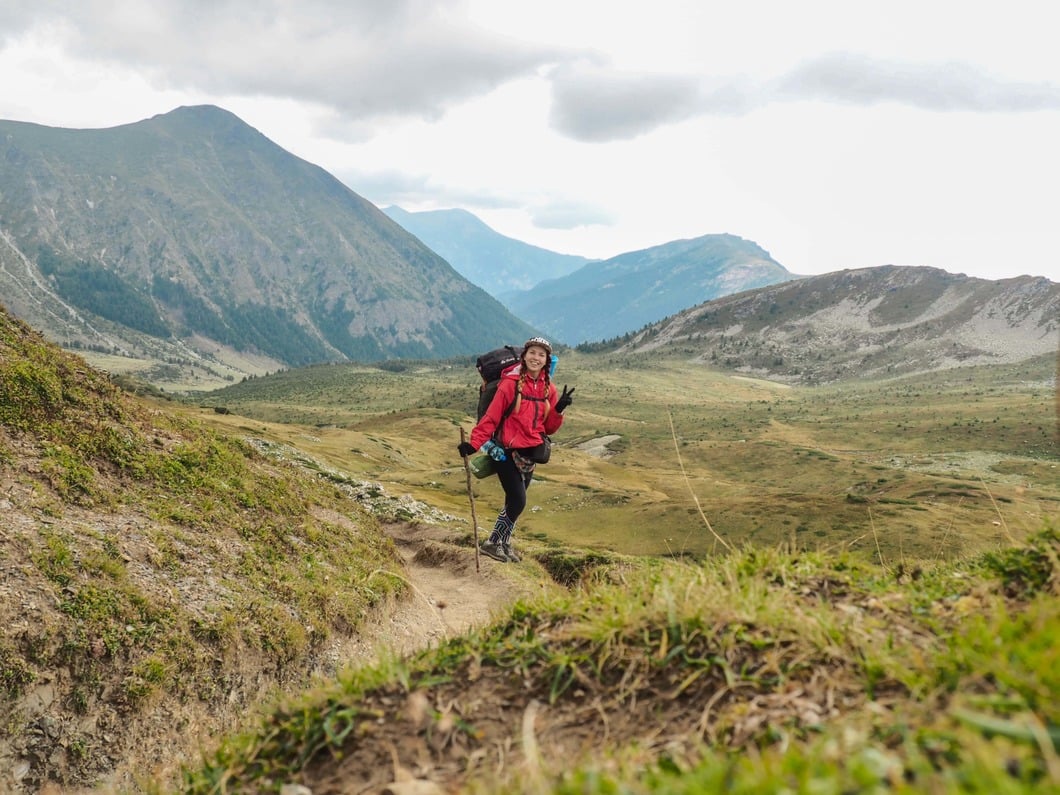
I’ve walked the famous Camino de Santiago across Northern Spain. While it did take over a month, it was a fantastic way to get a more detailed look into the life on the Spanish Northern Coast.
I’ve also hiked long stretches of Via Dinarica, a long-distance hiking trail going from Slovenia to Kosovo, and can vouch for it being one of the BEST ways to experience the Balkans .

We’ve tested countless backpacks over the years, but there’s one that has always been the best and remains the best buy for adventurers: the broke backpacker-approved Osprey Aether and Ariel series.
Want more deetz on why these packs are so damn perfect? Then read our comprehensive review for the inside scoop!
9. Wheels Away

Are you a fan of the Queen song Bicycle Race? Then you’re probably a biking enthusiast.
Travelling long distances on a bicycle, AKA bikepacking, is becoming more and more popular in Europe. In general, Europeans LOVE biking which means that most cities are pretty bicycle-friendly.
Covering large-ish distances on a bike is not a superhuman feat either. You’ll likely encounter other adventurous cyclists around Europe too.
Some of the best destinations for bikepackers in Europe include Denmark, the Netherlands, France, and the UK. You can combine your biking adventures with camping to cut costs even more. Just make sure all your stuff fits in the bike bags, that you have a good bike for long-distance biking , and that you bring heaps of happy vibes with you.
10. Travel Eastern Europe
Okay, technically this isn’t a method of getting around… But it is possible to travel around Europe really damn cheaply if you head to the right side of the map. I’m talking about backpacking Eastern Europe , of course.
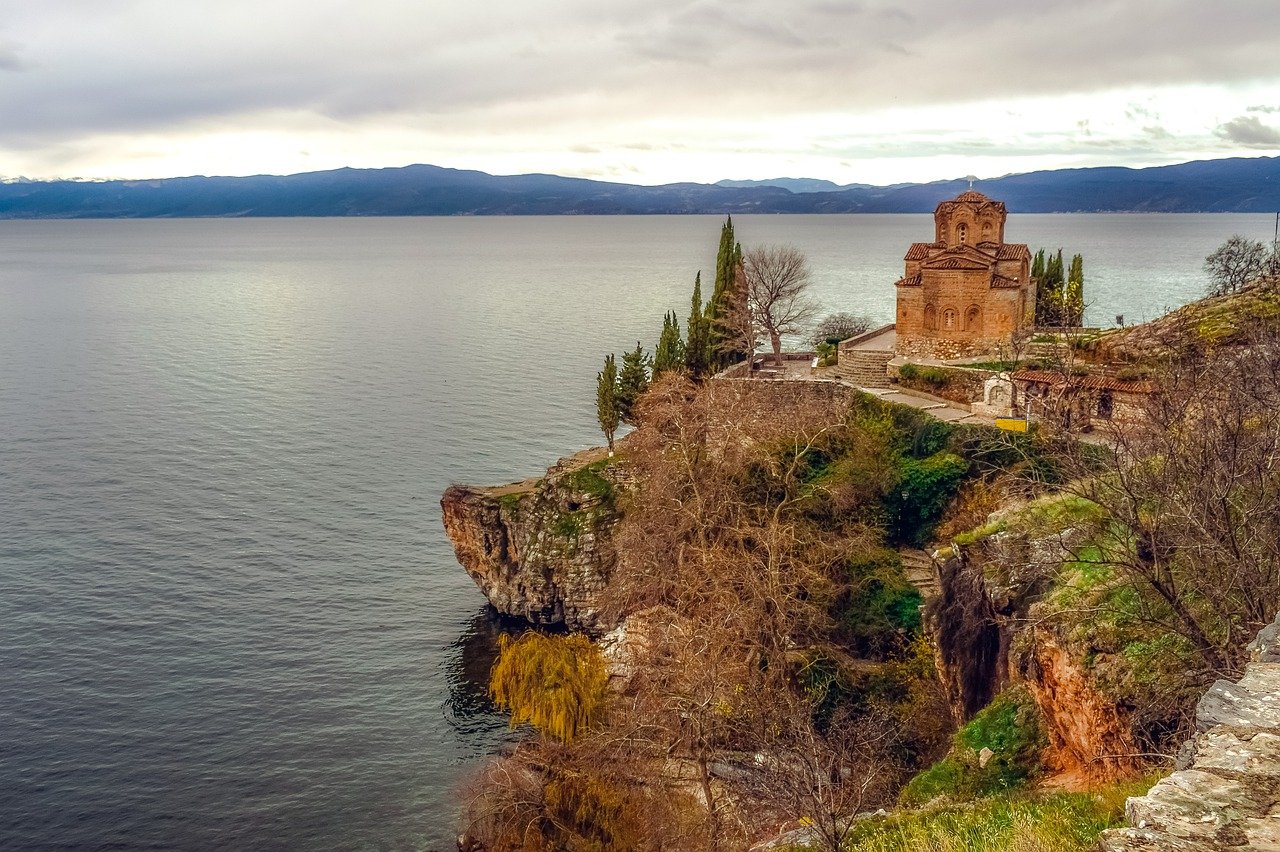
Most first-time backpackers head to Europe’s most touristed capitals to see the Colosseums and Mona Lisas that they know so well from other people’s stories. Eastern Europe might not have as many famous attractions as the most popular destinations but it has a LOT going for it.
Delicious food, fairytale towns, lack of hordes of tourists, excellent mountainage, and fascinating history? Sign me the fuck up.
Oh yeah, it’s also super cheap to travel. In some of the cheapest countries in Europe like Bulgaria, North Macedonia, or Georgia, you can spend as little as $20 per day!
Lastly… Travel Insurance is Very Much Recommended
It might seem counterintuitive to spend more money to save money. But trust me, travel insurance is the one thing that’s going to save you HEAPS if you ever end up needing it.
A savvy budget traveller should always consider getting a good travel insurance policy before leaving home. Health care in Europe is not usually full-bankruptcy-expensive (looking at you, USA…) but you never know what can happen on your adventures. Hospitalised by dodgy booze? Fell out of your top bunk? Bitten by a manic street dog?
ALWAYS sort out your backpacker insurance before your trip. There’s plenty to choose from in that department, but a good place to start is Safety Wing .
They offer month-to-month payments, no lock-in contracts, and require absolutely no itineraries: that’s the exact kind of insurance long-term travellers and digital nomads need.

SafetyWing is cheap, easy, and admin-free: just sign up lickety-split so you can get back to it!
Click the button below to learn more about SafetyWing’s setup or read our insider review for the full tasty scoop.
Travelling Europe really doesn’t have to feel like highway robbery. When you get the basics of budget travel in Europe down, spending the most minimal amount of money possible becomes second nature!
One thing that’ll surprise you about pro-level budgeting is that it’s hard work.
It takes a lot of time and effort to compare different route options and read through hostel reviews to make sure that booking cheap doesn’t mean that you’ll also book shitty.
When you’re hitchhiking and couchsurfing, you have to always be socially ON. (An introvert’s nightmare that can even terrify some real social butterflies like myself.) If you start noticing symptoms of a traveller’s burnout – it’s time to take a break.
Even when you’re travelling Europe on a shoestring budget, I always recommend having what I like to call “the fuck-it fund”, for days when you just gotta say, “ fuck it, I’m booking into a hotel” . A few days of stress-free spending makes for one happy budget backpacker and means that you get to keep going at your low-cost adventures all refreshed.
Travelling on a budget in Europe is not always the easiest feat. But as you’ve seen now, there are a lot of infrastructures that helps heaps if you’re trying to watch your spending.
And the best part? Everyone else is on a budget too! Bonding over shared cheapskating is a truly unique way to make friends on the road.
So gather up your pennies, book a budget bus, and get travelling!
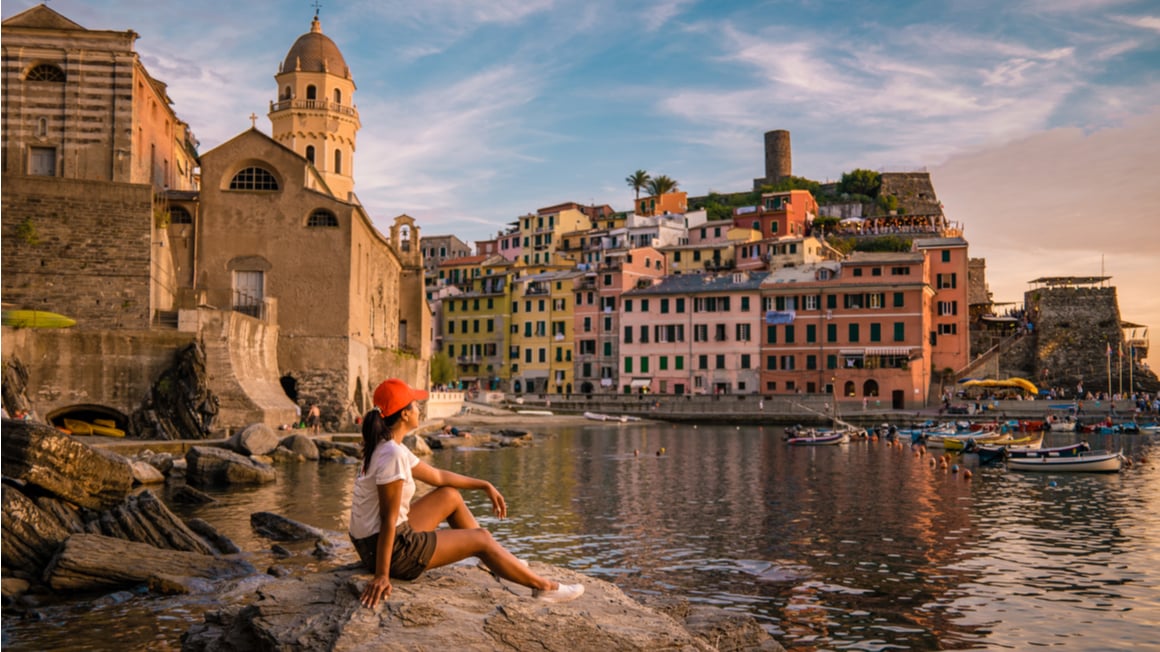
Elina Mattila
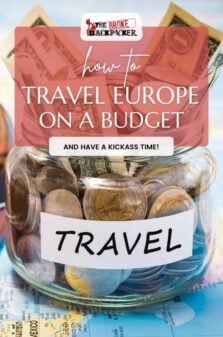
Share or save this post

i found it super hard to travel cheap in europe, everthing is just expensive 😀 i also start using this app ” ATM Fee saver” and i can highly recommend it to you! its briliant you will save some money on those ATM over there… check it out for further travels
Leave a Reply Cancel reply
Your email address will not be published. Required fields are marked *
Save my name, email, and website in this browser for the next time I comment.
Notify me of followup comments via e-mail.
The 20 best places to visit in Europe on a budget
Book your individual trip , stress-free with local travel experts
Select Country
- roughguides.com
- best-places-to-visit-in-europe-on-a-budget
Plan your tailor-made trip with a local expert
Book securely with money-back guarantee
Travel stress-free with local assistance and 24/7 support

written by Lottie Gross
updated 10.06.2024
Europe presents an irresistible challenge to the budget traveller. A potent mix of culture, landscape and history on the one hand and a cash-gobbling monster on the other, sticking to your daily allowance can prove tricky.
1. The Albanian coast
2. sarajevo, bosnia-herzegovina, 3. bansko, bulgaria, 4. czechia (czech republic), 5. estonia’s baltic coast, 6. leipzig, germany, 7. london, england, 8. the peloponnese, greece, 9. budapest, hungary, 10. palermo, sicily, italy, 11. lake ohrid, macedonia, 12. kotor, montenegro, 13. gdánsk, poland, 14. porto, portugal, 15. transylvania, romania, 16. novi sad, serbia, 17. the high tatras, slovakia, 18. northwest slovenia, 19. andalucía, spain, 20. lviv, ukraine.
But learn to zone out the “Spend! Spend! Spend!” siren song of its myriad restaurants, bars and shops and you’ll find that this compact little continent is simply the world’s greatest labyrinth.
There's an abundance of beautiful places in Europe which don't require much of a budget to see; and some experiences, like the infamous Budapest nightlife, combines both entertainment with local booze.
When exactly is the best time to visit Europe? Well, it depends on what you're after. Thankfully there's a year-round roster of things to do and see. We've picked out the cheapest places to travel on the continent this year (note that the "Rough Costs" below reflect per person or per night). From low budget tourist places in the world to the cheapest country to travel to, where do you think will make the list?
Want to find out more about budget travel in Europe? Check out our Rough Guide to Europe on a Budget .

Travel ideas for Spain, created by local experts

Andalucía Explored
Discover the best of Andalucía's breathtaking palaces, churches, museums, vineyards, and more, as you travel through spectacular scenery dotted with pueblos blancos and bordered by rugged mountains and coast en route to Granada, Seville, Ronda and Jerez de la Frontera.

A culinary experience in Seville
Explore the cuisine and surroundings of Seville in Andalucia. From Iberian ham over sherry wines to the production and secrets of olive oil, this tour is an ideal weekend getaway. Decide yourself if you prefer a rental car or a chauffeur-driven car to explore the beauty of Andalucia.

Spanish Honeymoon
Discover Andalusia, starting with the cultural city of Seville, then on to Córdoba and Granada, home of the stunning Alhambra Palace. Next you'll visit Granada and the Albayzin Arab quarter, then enjoy a stunning hot-air balloon ride, before ending your trip with a luxury boat trip from Marbella!
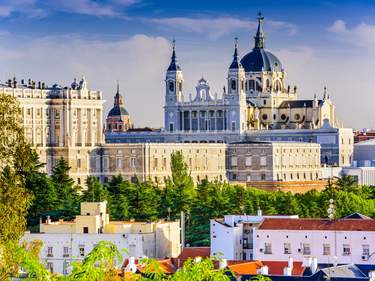
Made for Madrid
Take to the Spanish capital for art, culture and a taste of life in the city, Madrileño-style. Explore age-old churches and pretty plazas, stroll through the lovely Buen Retiro Park and visit captivating Toledo. Then, come sundown, discover the city's vibrant barrios and lively nightlife.

A Madrid getaway
Spend four days discovering the wonders of Spain's capital Madrid: from fascinating museums like El Prado and Reina Sofia over exploring unknown corners with your private guide to a day trip to the surroundings, this itinerary packs the best of Madrid.

Hidden Spain - From Barcelona to Basque Country
Do you want to explore highlights in Spain while staying in nature at the same time? Look no further. Start your Spanish adventure in Barcelona before heading off to the mountains - drive your rental car to Andorra and further on to Basque Country. Decide between driving yourself or guided tours.
Looking for Mediterranean sun and sand, but your budget doesn’t quite stretch to Capri or the Côte d’Azur? Simply head further east and you’ll find sun-drenched beaches untouched by modern development. Albania is one of the cheapest countries in Europe, and as yet under-explored by the tourist hordes. On its southern Ionian coast, steep grey mountains frame azure seas and golden sands.
Also take note - the Albanian capital Tirana will certainly surprise you with the number of interesting things you can do there .
Sarande is almost in touching distance of Corfu and is a handy entry point from Greece. From here you can aim for the beaches of Ksamil and nearby islands. Cheap seafood, warm seas and a smattering of isolated Greek ruins and Ottoman towns: the perfect recipe for a classic European sojourn.
Where to stay
Best for being on the beach: Vila E Bardhe
Best for great views of the harbour: Hotel Real
From Saranda: Visit the archaeological park of Butrint on a private tour
From Durrës: Wine tasting and history tour in Berat
Find more ideas for visiting Albania with our guide to the best things to do in Albania .
Rough costs:
Daily budget: Basic €30, occasional treat €45
Drink: Bottle of red wine €6
Food: Qoftë (minced meat rissoles) €2, seafood €6
Hostel/budget hotel: €15/€35
Travel: Bus: Tirana–Saranda €10.50; train: Tirana–Shkodra €3.30
Buy the guide >

Though the scars of Sarajevo ’s past as a city under siege are still evident. There are remnants of mortar shell explosions, filled with red resin to form “Sarajevo Roses”, and the museums document the horrors of Sniper Alley. Today, the city buzzes with life and is one of the cheapest countries in Europe. If you don't want to miss any of the key historic sites, book ahead and join a guided tour.
One of the most welcoming capitals in Europe, its central district of Baščaršija is a delight to wander through. Browse in the Ottoman-era bazaar or linger over a Bosnian coffee. The after-hours scene is quirky and cool, with tucked-away drinking holes and an ever-evolving club scene.
Best hostel for city location: Hostel Franz Ferdinand
Best for location to tourist attractions: Hotel Europe
Best for first time visitors: A guided walking tour in Sarajevo
Best for getting out of the city: A day tour to Jajce and Travnik
Rough costs
Daily budget: Basic €28, occasional treat €45
Drink: Bosnian coffee €0.70–1
Food: Cevapcici (meat rissoles) €3–4
Hostel/budget: €10/€28
Travel: Bus: Sarajevo–Bihać €17–25; train: Sarajevo–Mostar €5–7
Read our destination guide to Bosnia-Herzegovina >

Hitting the slopes without breaking the bank can be a challenge. Especially when the main Alpine resorts are located in some of the most expensive countries in Europe! However, eastern Europe has a few intriguing ski destinations, including Bulgaria ’s Bansko on the Pirin mountain range.
The country’s main ski resort has good beginner and intermediate runs. There's a decent range of shared or private accommodation to choose from, easily making Bansko one of the best places to visit in Europe with friends. The town itself has considerable charm, with numerous traditional old pubs hidden down its cobbled alleyways.
Best for guest house experience: Zigen House
Best for great location: Kap House Hotel
Best for the adventurers: River rafting on the Kresna Gorge
Best to get to know the culture: Experience local traditions, dishes, crafts and stories
Also while planning your visit, read our guide to the best things to do in Bulgaria .
Drink: Beer (0.5l) €1.25
Food: Shopska salad €4
Hostel/budget hotel: €12/€60
Travel: Train: Sofia–Plovdiv €4–6; bus: €5
Find out more about Bansko >

Though ever-popular Prague is not quite the dirt-cheap city break destination it once was, you’ll still find Czechia (Czech Republic ) to be a good-value country for independent travel. The country that invented Pilsner is justifiably famous for producing some of the best beers – at pretty good prices.
But there's plenty of other reasons as to why it's one of the best places to visit in Europe . In Prague , the choice of watering holes ranges from traditional beer halls and monastery taverns to a new generation of microbreweries. Continue the Czech beer trail with a visit to the Pilsner Urquell brewery in Plzeň, before striking out to the country’s lesser-known spots, such as charming Olomouc , a pint-sized Prague without the tourists.
If you're heading to Prague, where you're based can make all the difference to your experience, so make the right start with our guide to the best places to stay in the city.
Best location for hostel: Safestay Prague
Best for shopping and city centre: K+K Hotel Central
Best for history buffs: Small group tour to the Prague Castle
Best for a magical evening: Dinner cruise on an Open-Top Glass Boat
Daily budget: Basic €45, occasional treat €55
Drink: Pilsner Urquell (0.5l) €1.60
Food: Pork and dumplings €8
Hostel/budget hotel: €20/€45
Travel: Train: Prague–Karlovy Vary €12; bus: €14
Explore the best of Czech Republic >

Related articles from the blog

Known for the popular city break destination of Tallinn , small and beautiful Estonia also provides swathes of wilderness, with beautiful stretches of coastline, a scattering of islands and forested national parks along its long Baltic coastline. With so much centered on the outdoors, it's arguably the cheapest country in Europe.
An hour from Tallinn, 725-square-kilometre Lahemaa National Park is best explored by bike. You can cycle its coastal paths, discover rugged coves, windswept beaches and fishing villages and even sleep on hay bales at a farm. Venture further west, and the summertime resort of Pärnu has fantastic beaches, The island of Saaremaa offers soft-carpeted pine forest countryside and very affordable spas.
Best for boutique hotel in Tallinn: Hotel Meltzer Apartments
Best for boutique spa in Saaremaa: Grand Rose SPA Hotel
Best for historical, Soviet heritage: Day tour from Tallinn to Naissaar, also known as Women's Island
Best for urban exploration: The Industrial Stalker Bike Tour in Kalamaja District
Daily budget: Basic €40, occasional treat €60
Drink: Le Coq beer €2.60
Food: Blood sausage and sauerkraut €7
Travel: Bus: Tallinn–Saaremaa €9; Tartu–Tallinn €13

As far as Europe travel goes, Berlin is an anomaly. It’s one of the few capitals where the cost of living is lower than the national average. It's a legacy of the country’s former divide, which still means former East Germany is notably cheaper than western centres like Frankfurt and Munich . But as prices gradually rise in gentrifying Berlin, there are other eastern cities to venture to, including buzzing Leipzig .
The city that kick-started the 1989 protests that led to the country’s reunification has long had a fierce, independent spirit. Over the past few years, it’s also developed quite a reputation for its thriving artist enclaves and offbeat nightlife. Its culture scene is in constant flux, with old industrial buildings, such as former cotton mill the Spinnerei, converted into cutting-edge spaces.
Best for city location: IntercityHotel Leipzig
Best for little luxury: Pentahotel Leipzig
Best for family exploration: 3hr canoe tour through the city
Best for first-time visitors: Hop-on Hop-off bus tour including walking tour
- Daily: Budget Basic €57, occasional treat €73
- Drink: Beer (0.5ml) €3.35
- Food: Schnitzel €8
- Hostel/budget hotel: €20/€35
- Travel: Munich–Berlin: train €55–142; bus €22
Fall in love with the rest of Germany >

London and budget aren’t words that usually go together. However, London has more free world-class attractions than any other European city. There's the British Museum , home to enough treasures to satisfy the most curious of history hunters; the vast Tate Modern , with stupendous views from its terrace and ever-changing art collections; the Natural History Museum with its magnificent dinosaurs; and beautiful Victoria & Albert Museum – all free, all of the time.
And don’t forget the open spaces: spend a day tramping across Hampstead Heath, another meandering along the South Bank or perusing East End markets and you’ll get more of a sense of city life than if you’re stuck in a queue at an overpriced attraction. For food, opt for the popular street-food markets and your budget will stretch further – you might even have enough left for an overpriced pint.
Best for being in the centre of London: The Z Hotel Piccadilly
Best for location to Southbank: Park Plaza London Waterloo
Best for stunning views: The London Eye (make sure to book your ticket ahead of time to skip the lines)
Best for the adventurers: Climb the O2 Arena
- Daily budget: Basic €70, occasional treat €90
- Drink: Lager €6
- Food: Fish and chips €10
- Hostel/budget hotel: €13/20 (dorm/private)/€70
- Travel: Train: London–Brighton €20; bus: London–Manchester €40
Get the London low-down >

Think of budget travel in Greece , and the image is still one of island-hopping, sleeping on the deck of a ferry or camping on the beach. However, the slow pace of island travel and the popularity of the main resorts all adds to the cost.
Instead, consider the many-fingered peninsula of Greece . It has some fine beaches – less developed than those on the main islands – and it is home to the ancient sights of Epidaurus and Olympia . Medieval villages, spectacular rack-railway journeys and appealing Byzantine towns all await those who explore beyond the package holiday destinations.
Best for beaches in Finikounta: Hotel Golden Sun
Best for location in Nafplion: Pension Eleni
Best for day tours from Athens: Nafplio and Ancient Epidaurus
Best for explorers: Self-guided virtual reality tour of Olympia
- Daily budget: Basic €31, occasional treat €42
- Drink: Ouzo €3
- Food: Souvláki (shish kebab) €3
- Hostel/budget hotel: €21/€31
- Travel: Bus: Athens–Delphi €19; ferry: Athens–Crete €38

Straddling the Danube, the twin enclaves of Buda and Pest together make one of the most beguiling capitals in Europe . Their main pleasures won’t break the bank, making it one of the top cheap places to travel to.
Spend the day lounging by the pools in the spa, taking the occasional dip, cooling off under the fountains, and watching the old men play chess at the waterside tables. Come evening, the “r uin-bars” of District VII beckon – idiosyncratic bars tucked away in the neighbourhood’s courtyards. The tipple of choice is the cheap local white or rosé drunk long as a spritzer, perfect in the baking heat of summer.
Budapest is one of the best places to visit in Europe in the Spring (March to May) or Autumn (Sept to Nov) as the climate is at its most pleasant – ideal for those outdoor spa days and pounding the pavements.
Best for location to city centre: Arcadia Hotel Budapest
Best for a little luxury: Hotel Palazzo Zichy Budapest
Best to relax: Soak up the atmosphere at the Thermal Margaret Island Spa
Best for wine connoisseurs: Taste 7 Hungarian wines from boutique wineries
- Daily budget: Basic €42, occasional treat €62
- Drink: Beer (large) €2–2.60
- Food: Goulash €3–4
- Hostel/pension: €16–31
- Travel: Train: Budapest–Eger €8.30
Find out more about Budapest >

Any grand tour of Europe includes a string of beautiful Italian cities: refined Florence , alluring Rome and glamorous Venice . While there’s no doubting their charms, they are well and truly on the tourist trail, which pushes up prices, particularly in high season.
Escape from the mainland to Sicily and you’ll find in its capital Palermo a city both redolent of the Italy of yesteryear and – if you ask a Sicilian – a country apart. Undoubtedly run down in places, the city unfolds many surprises . There are churches covered in exquisite mosaics and cluttered neighbourhood markets, where you can snack on local street foods, like arancini (rice balls) and panelle (chick pea fritters), as you wander.
Best for popular attractions: Hotel Palazzo Brunaccini
Best hostel for location to the city: Balarm Hostel
Best for foodies: 3hr street food and history walking tour
Best for day trips: Explore Western Sicily with Segesta, Erice and Salt Pans
- Daily budget: Basic €36, occasional treat €52
- Drink: Wine €2.60/glass
- Food: Local pasta dish €5–8; pizza slice €2
- Hostel/budget hotel: €16–31/€47–62
- Travel: Train: Rome–Naples €21; bus: €12
Get inspired for Sicily >

Vast, deep, Lake Ohrid is the jewel of North Macedonia . The quiet streets of its namesake town reveal frescoed medieval churches, a Roman amphitheatre and a fortress worth climbing for the views. But as you explore the old town, the clear lake waters draw you back time and time again, inviting you to swim, dive or take to the waters by boat.
If you are tempted landwards it might be to hike in the nearby Galičica National Park. With cheap private rooms to rent and several waterside camping spots, the area is perfect for travellers on a budget to kick back and relax.
Best for a cosy guest house: Villa & Winery Mal Sveti Kliment
Best for views of Lake Ohrid: Villa Kale
Best for those with limited time: Day tour from Skopje to Ohrid
Best for history buffs: Private half-day city tour
- Daily budget: Basic €26, occasional treat €36
- Drink: Wine from €2.60 per bottle
- Food: Tavče gravče (bean casserole) €1.50
- Hostel/budget hotel: €10/€26
- Travel: Bus: Skopje–Ohrid €7; train: Skopje–Bitola €4

Travelling cheap? Montenegro won't disappoint. The beautiful walled town of Kotor sits at the end of a fjord-like bay, ringed by dramatic peaks. Just follow your nose in the Old Town. Getting lost in the labyrinth of streets is half the fun, discovering summertime cafés that spill out on the squares before clambering along the old fortress walls.
For a view over the whole gorgeous scene, hike up to St Ivan’s castle, overlooking the town. Kotor’s annual highlight is August’s exuberant Boka Nights festival , when the whole town celebrates as a lavish display of decorated boats parade in the bay and fireworks fill the sky.
Where to stay:
Best for boutique hotel: Boutique Hotel Astoria
Best for location to the city centre and the beach: Muo Apartments
Best to get away from the crowds: 2.5h Kayak Tour in the Bay of Kotor
Best for a day trip: Boat Tour to the Blue Cave & Our Lady of the Rocks
- Daily budget: Basic €31, occasional treat €52
- Drink: Nikšičko Tamno beer €1 (bottle from shop)
- Food: Sarma €2.60–4
- Hostel/budget hotel: €21/€52
- Travel: Bus: Budva–Kotor €3; train: Podgorica–Virpazar €1
For more ideas for visiting Montenegro read our guide to the best things to do in Montenegro .

Part beautiful Hanseatic city, part gritty port town and part Baltic riviera, the northern Polish city of Gdánsk offers a winning combination of coastal appeal. Though the core of this picturesque, colourful city, with its narrow merchant houses, looks ancient, it’s actually a postwar reconstruction – but the history is genuine. It's one of many cheap travel destinations to visit in Poland!
The shipyard crane dates back to the 15th century, and the city was the birthplace of the Solidarity anti-communist movement. Come summer, the action moves to the hip, coastal resort of Sopot , with its golden sand beach, lively party scene and attractive pier (the longest in Europe).
Best for location to the city centre: PURO Gdansk Stare Miasto
Best for great views and location to the city: Mercure Gdansk Stare Miasto
Best for nightlife: Pub Crawl with free drinks
Best for first-time visitors: Electric Scooter guided tour of the Old Town
- Daily budget: Basic €52, occasional treat €73
- Drink: Vodka (50ml shot) €1
- Food: Żurek soup €2–3
- Hostel/budget hotel: €12/€36
- Travel: Train: Warsaw–Kraków €34; bus: €16
Explore the WW2 Liberation Route with the help of a local expert >

Portugal travel doesn't get more exciting than in Porto. Portugal’s second city is appealingly set on the banks of the river Duoro. The riverside district of Portugal is crammed with no-frills good, local restaurants – pick somewhere a street or so back from the waterfront and you’ll be spoilt with local dishes and wines at excellent prices. With the city set on either side of the river, check our guide to the best places to stay in Porto to find accommodation that suits you best.
Other highlights include the vast Portugal park, with a superb art museum set within. However, it is port that the city is famous for. Vinologia is a great bar for an introduction to the varieties of fortified wine, and you can visit the port lodges across the river in Vila Nova de Gaia, where for a few euros you can sample their wares.
Make the most of your time in Porto and book ahead to explore some of the unknown wine cellars in the city .
Best for walks along the waterfront: 1872 River House
Best for value with style: MyStay Porto Batalha
Best for day tours: Small group tour to the Douro Valley, Wine Tasting and a River Cruise
Best for iconic views: Torre dos Clérigos (skip-the-line tickets)
- Daily budget: Basic €47, occasional treat €68
- Drink: Bottle of vinho verde in shop €3.60
- Food: Grilled sardines €8
- Hostel/budget hotel: €21/€47
- Travel: Train: Lisbon–Faro €23; bus: Porto–Lisbon €21
Delve into Porto >

Think Transylvania , and you’ll probably imagine Dracula and his castle – and you can certainly go in search of Dracula (aka Vlad the Impaler) connections here. If you're interested in finding Dracula, book your tour here . As Vlad’s birthplace, the attractive town of Sighisoara has the best claim to fame, and it also has a suitably imposing citadel.
But the region is not all fortifications and fangs – make time to venture out into the wilds of the Carpathian mountains , where you can track the Transylvanian wolf, along with bears, red deer and lynx in the Piatra Craiului National Park.
Best for visiting Vlad the Impaler: Casa Richter
Best for visiting Piatra Craiului National Park: Vila Hora cu Brazi
Best for explorers: Medieval City Exploration Game and Tour in Sighisoara
Best for those travelling in high season: Fast track tickets to Bran Castle (Dracula's castle - Romania's number one attraction)
- Daily budget: Basic €26, occasional treat €42
- Drink: Beer €1.90; bottle of Romanian wine €5
- Food: Tochitura moldoveneasca (Moldavian stew) €2.10
- Hostel/budget hotel: €10/€31
- Travel: Bus/train: Bucharest–Braşov €10
Discover more affordable places in Romania >
Also check our best things to do in Romania to make your trip here even more exciting.

Serbia abounds with sights to suit all tastes. Fancy a low-cost summer music festival? Serbia ’s famous EXIT Festival held in July might be just the ticket, and it’s less than half the price of Glastonbury. The line-up is always eclectic, with past acts including David Guetta and Ziggy Marley.
A trip here is about more than the music, however, with a setting that leaves other festivals in the shade. The Petrovaradin fortress stands majestically above the lively city of Novi Sad , a couple of hours from Belgrade. Stages and festival spaces fill every corner of the fortress, and you can spend your days lounging on the river beaches on the banks of the Danube.
If you don't have the time to stay longer, consider taking a day tour from Belgrade to explore Novi Sad and taste the local wines in Sremski Karlovci.
Best for rooftop views of the city: Hotel Leopold I Novi Sad
Best hostel for city location: Hostel Sova
- Drink: Beer (0.5l) €1
- Food: Pljeskavica (hamburger) €1–2
- Hostel/budget hotel: €13/€37
- Travel: Bus: Belgrade–Novi Sad €6; train: Belgrade–Niš €7
Get the low-down on Serbia >

Slovakia's pride and joy , the Tatras mountain range is a magnificent series of peaks – culminating in the pyramid-shaped Gerlach at 2,655m. Start at one of the village resorts like Nový Smokovec or Ždiar, then make for the mountains, where you can rest your weary heads at cheap hikers’ chalets.
This is serious mountain terrain, so be prepared and heed local advice. The mountains are also an inviting playground for climbers and cavers, and you’ll find mountain bike paths, tubing and rafting, plus a full winter season of skiing and snowboarding.
Best for the location to popular attractions: Penzion Reitmayer
Best for families: Apartmanovy Dom TatraTravel Smokovec
- Daily budget: Basic €37, occasional treat €47
- Drink: Beer €1.80
- Food: Gnocchi with bacon €4
- Hostel/budget hotel: €16/€31
- Travel: Bratislava–Košice (train) €20

Sandwiched between Italy, Austria and Croatia, compact Slovenia is an appealing destination on any journey through Europe. There's its charming capital, Ljubljana , as well as easy travel, a burgeoning wine industry and tempting pocket of coastline. For the adventure-minded, or for those who just want to camp in a beautiful lakeside setting, the northwest region is perfect.
Nestled below the stunning Julian Alps are the very different twin lakes of Bled and Bohinj . From here you can carry on to the Soča Valley, right by the Italian border, for hiking, kayaking and rafting adventures.
Best guest house for views of Lake Bled: Penzion Vila Prešeren
Best for lake views: Grand Hotel Toplice
Best for adventurers: 3hr Rafting Experience
Best for wine experiences: Taste 7 top Slovenian wines in a 100-year old wine cellar in Bled
- Drink: Pivo (beer' 0.5ml) €2.60
- Food: Pizza €5–7
- Hostel/budget hotel: €19/€62
- Travel: Train: Ljubljana–Maribor €9; bus: Ljubljana–Bled €7
Find out more about Slovenia >

The southernmost province of Spain, Andalucía travel is a tempting budget destination. This perennially popular region boasts showpiece cities such as Seville , Granada and Córdoba , with their exquisite monuments highlighting the area's Moorish past. Even here prices are competitive compared with Madrid and Barcelona.
You only need to head a little further afield, to the underrated city of Málaga with its Picasso connection and authentic tapas scene, or the atmospheric ancient port city of Cádiz, and you’ll enjoy that alluring southern Spanish vibe for budget-friendly prices. Cheap tapas (the tradition of free tapas originates in Granada) means you can sample Iberian flavours for a couple of euros a plate, and to continue your budget adventure, simply hop on the ferry to Morocco, tantalisingly close by.
Best guest house location to city centre: El Riad Andaluz
Best for style on a budget: Hotel Boutique Villa Lorena Malaga
Best for exploring arts: Guided tour through the Picasso Museum
Best for short hikes: Caminito del Rey - 3hr guided hike
- Daily budget: Basic €68; occasional treat €88
- Drink: €1.80–2.60 per caña (small beer)
- Food: Menú del día €10–12
- Hostel/budget hotel: €17/€36–83
- Travel: Madrid–Barcelona: bus €33–45; train €62–130
Book onto the best things to do in Andalucía

Situated in the west of this vast country, within easy travelling distance of Central European cities such as Kraków and Budapest, Lviv is the city to head for if you want a taste of Ukraine.
It revels in a mixture of Central European influences: Habsburg and Polish, Catholic, Orthodox and Armenian, with its architecture and magnificent churches reflecting this eclecticism. Ukraine regularly features on the list of cheapest destinations in Europe, and with a growing supply of backpacker hostels, appealing coffee houses and quirky bars, this is an extremely budget-friendly city with a refined edge.
Best for location to the city centre: Lviv Central Jam Hotel
Best for style on a budget: Taurus Hotel
Best for first time visitors: Lviv Old Town Walking Tour
Best for foodies with an interest in history: Communist-style Food and Bar Tour
- Drink: Horilka (vodka; 50ml shot) €1
- Food: Ukrainian borshch €0.80
- Hostel/budget hotel: €8/€31
- Travel: Train: Kyiv–Odesa €10; bus: €19
Top image © Patteran/Shutterstock
This feature contains affiliate links; all recommendations are editorially independent.
Top image: Malaga, Spain, Old Town Skyline © S Pavone / Shutterstock
- Travel Tips
Planning your own trip? Prepare for your trip
Use Rough Guides' trusted partners for great rates
Find even more inspiration here
Ready to travel and discover spain, get support from our local experts for stress-free planning & worry-free travels.

COMMENTS
Hopping on a plane and getting to Europe can be very affordable. What about when you get there? Learn the best tips and tricks for traveling Europe on a budget.
A comprehensive budget travel guide to Europe with tips on things to do, costs, ways to save, transportation, accommodation, and more!
The best time to visit Europe on a budget is during its low season. From November to March, you’ll find low hotel rates, cheap flights and far fewer people hogging the best sites. It’s the perfect trifecta if you want to stretch your money as much as possible while travelling Europe on a budget.
10 Ways to Get Around Europe on the Cheap. Learning how to travel Europe on a budget comes down to a few tricks: cook your own food, stay in hostels or couchsurf, and take advantage of free things to do (each European country has heaps!).
One-Month Europe Trip on a Budget: A Full Itinerary and Cost breakdown. This guide includes my full itinerary and cost breakdown for accommodations and transportation between cities. It also contains things to do and where to stay in London, Paris, Ghent, Bruges, Barcelona, Seville, Granada, Cordoba, and Madrid.
Europe presents an irresistible challenge to the budget traveller. A potent mix of culture, landscape and history on the one hand and a cash-gobbling monster on the other, sticking to your daily allowance can prove tricky.